The Cuban corals
We’re jumping into the German Democratic Republic of the 1960s, back when Germany was still a separated country. The country’s museums weren’t that attractive, so the party leadership came up with a rather unusual idea, which the scientists at the Museum of Natural History at Humboldt University in Berlin were to fulfil in together with the Central Diving Club of the GDR. A plan which probably wouldn’t be feasible today.
The GDR wanted a coral reef for their museum, including its preserved inhabitants. As you can imagine, such a project is quite difficult, because the Baltic Sea isn’t directly known for their coral reefs and tropical fish.
So what could be more obvious than to look around in other socialist partner countries. After some deliberation and discussion, a suitable candidate was found – Cuba.
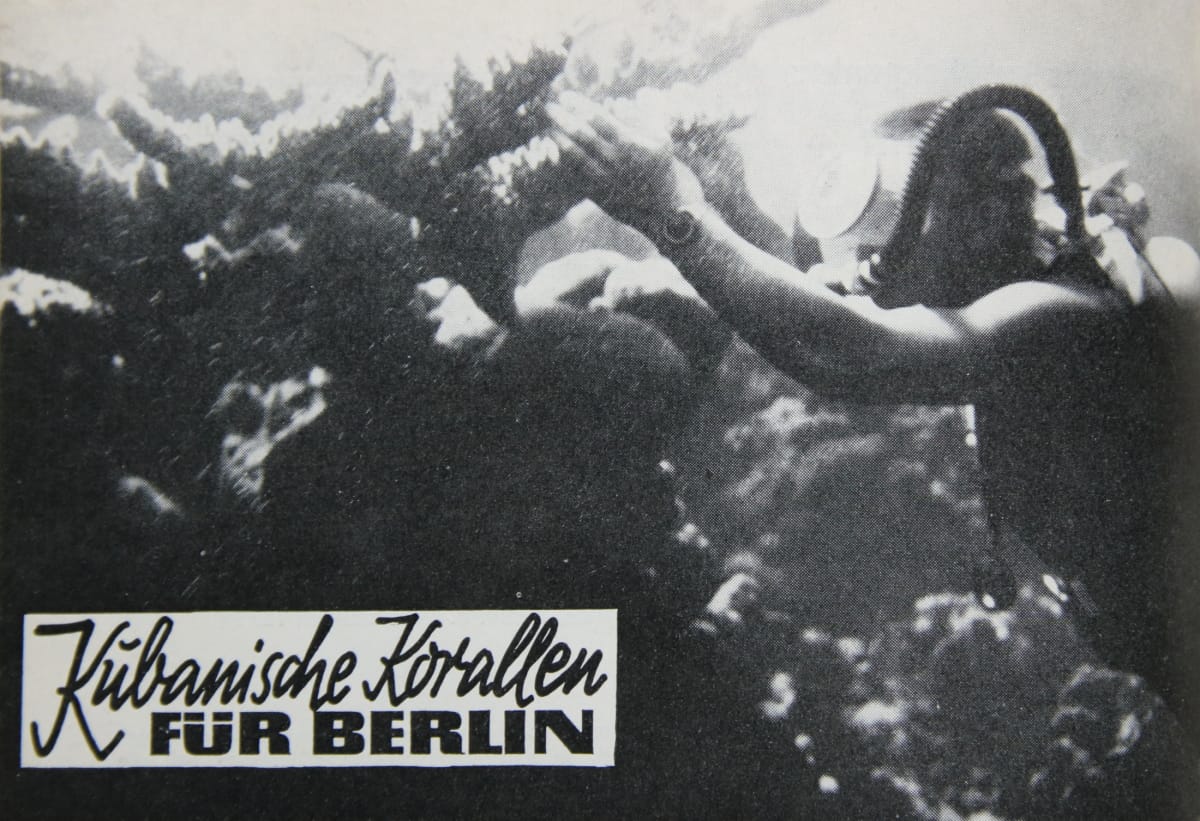
The Expedition
Months of planning and intensive preparation preceded the departure of the expedition ship from the port of Rostock on March 24, 1967, and the long journey to Cuba began. The divers and some other Humboldt University staff followed later by plane.
The weeks went by…
The sun shines down from the steel-blue sky, it’s hot and humid, and the air smells salty. Wide tire tracks lead through palm trees across the sandy beach down to the sea.
By now it is the end of June, the Cuban Revolution and the Cuban Missile Crisis were just a few years over, and on a beach not far from Havana some men are unloading tools, boxes and their diving equipment and preparing a raft and boats. The extraordinary mission can begin. The men get into their boats and head out to sea towards the reef.

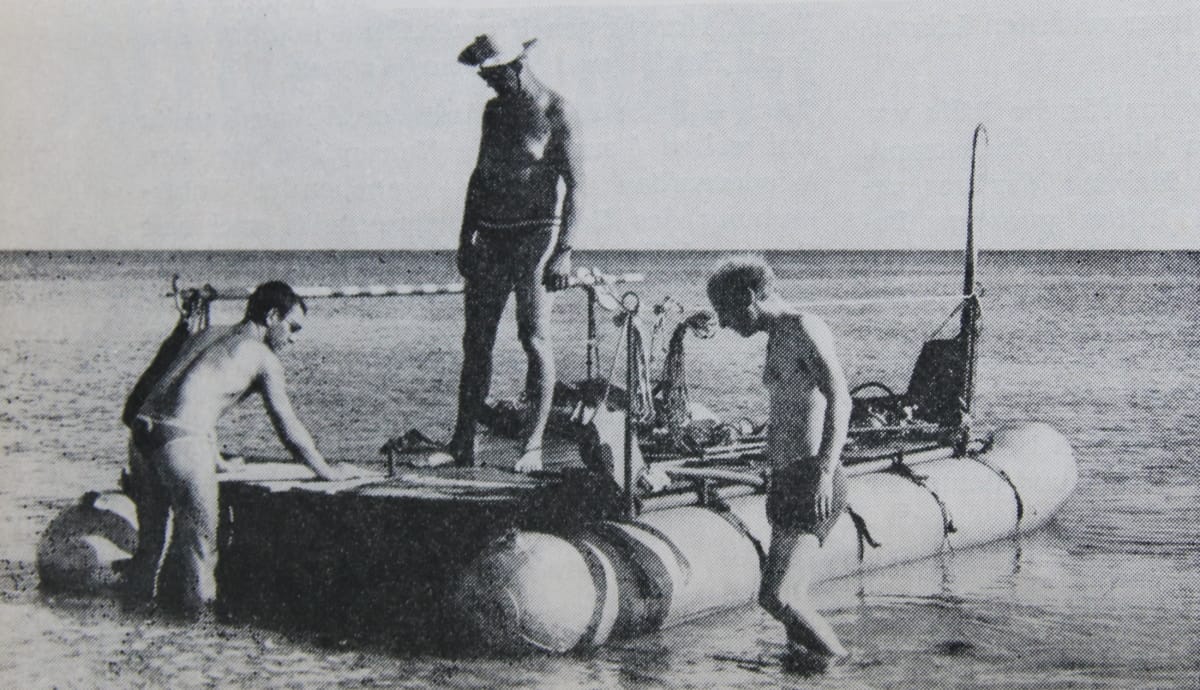
Their task: the dismantling of a 10 m (33 ft) long and 3 m (10 ft) high section of a coral reef, as well as the collection and preparation of reef inhabitants.
This small reef will then be transported back to East Berlin in individual parts and reinstalled in the Natural History Museum, at least according to plan.
The GDR sent not only the sport divers of the Gesellschaft für Sport und Technik (GST), who were supposed to mine the corals. To the 8000 km (4970 miles) away island they also sent a medical team and various scientists and taxidermists from the Humboldt University of Berlin and the Natural History Museum. The effort for this 8-week expedition was big, several boxes full of food, kitchen equipment, underwater cameras, tools, compressors, boats and even a truck were taken on the trip.
The expedition members were supported on site by three divers from the Oceanological Institute of Cuba.
Once at the reef, the first exploratory dives were completed.
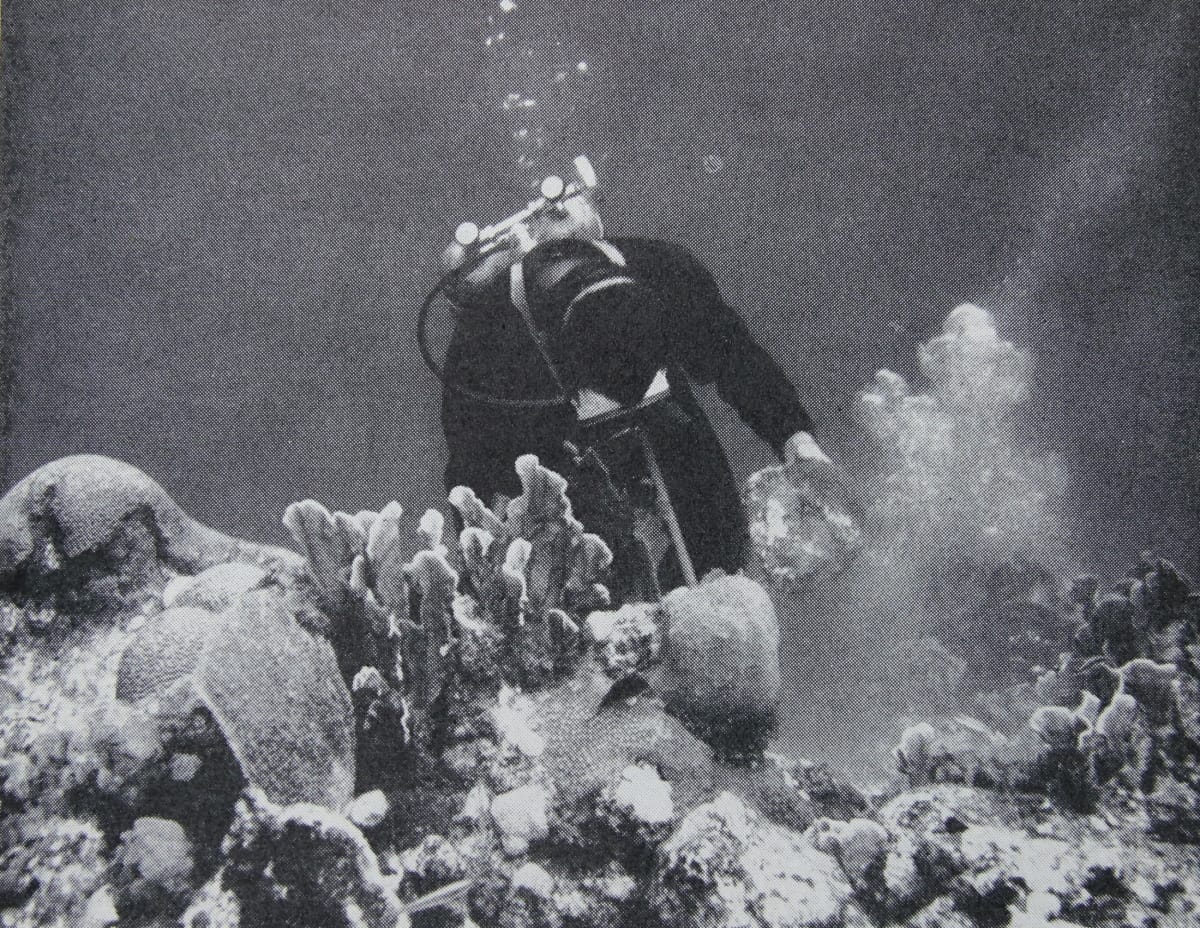
Since as many different coral species as possible were needed for such a small reef, the divers searched for suitable pieces in a wide variety of places during their dives.
Armed with hammers and chisels and hoping that no vicious critters would haunt the divers during the mining process, the men set to work.
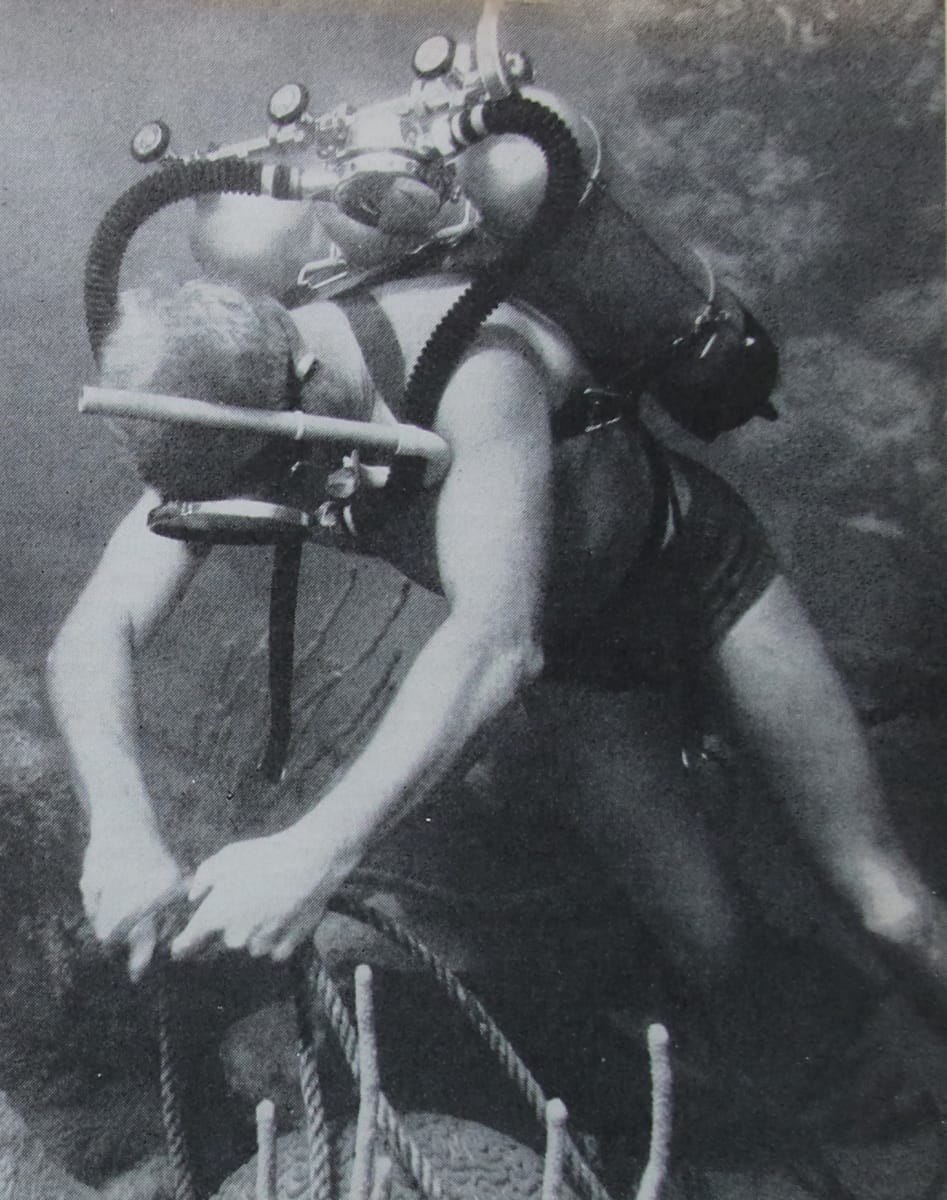
While some of the divers were working on the reef, suitable marine life also had to be found. During the entire expedition, various animals were caught and prepared for the upcoming preparation in Berlin.
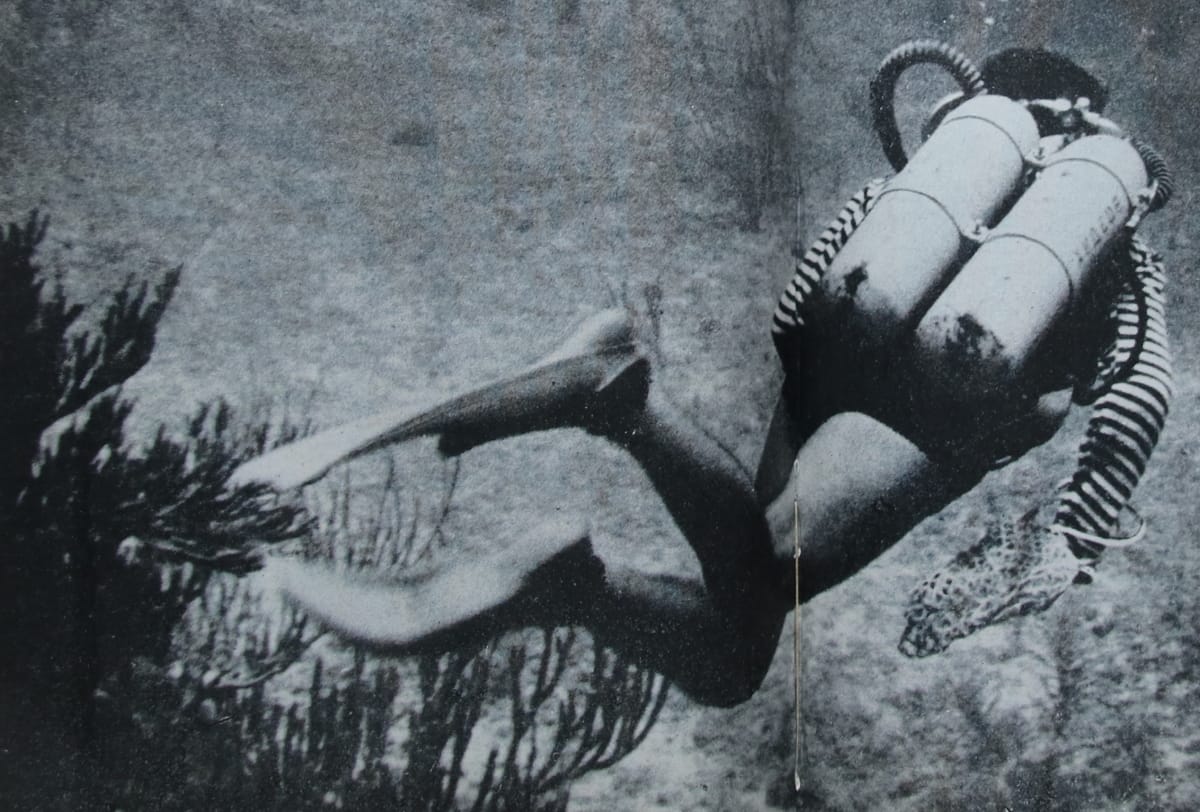
Most of the corals were easily detached with smaller tools and were brought to the surface in boxes using hoists and lifting chutes, where they were loaded onto a raft.
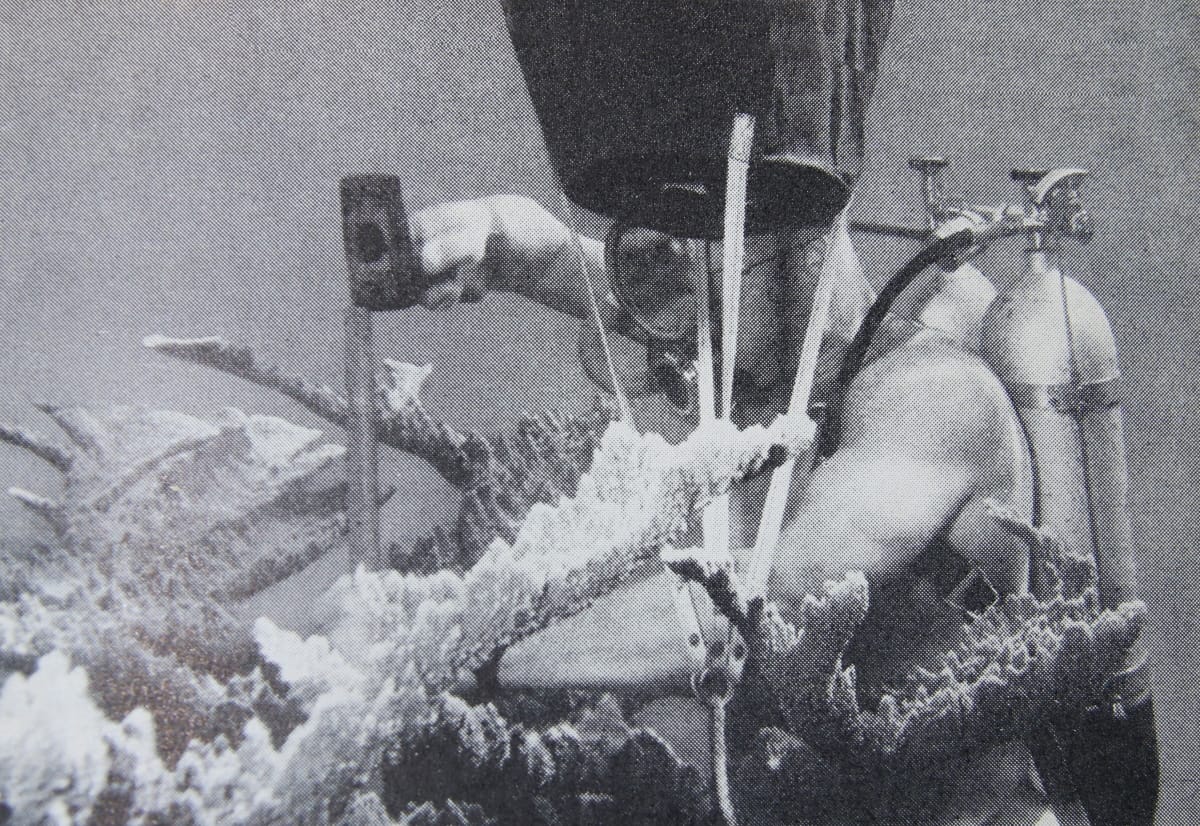

For the very heavy coral chunks larger equipment had to be activated. A so-called “Brain Coral” weighing 250 kg (551 lbs) was removed from the reef with a pneumatic chisel. It couldn’t be brought to the surface with conventional methods due to its weight, so a new plan was needed.
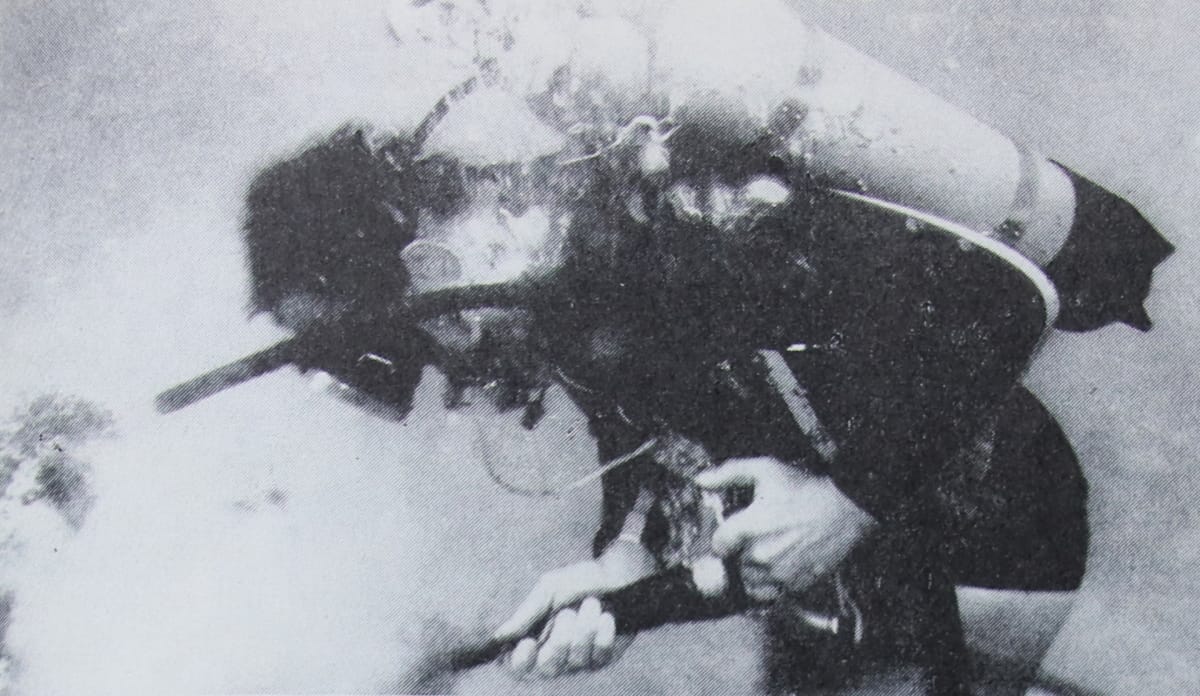

Without further ado, the air was released from one of the two large inflatable boats and brought to the seabed. There, the coral was rolled onto the boat. The boat was then filled with compressed air again. This let the huge coral rise to the water surface and it was able to be cataloged and packed with all the other artifacts.
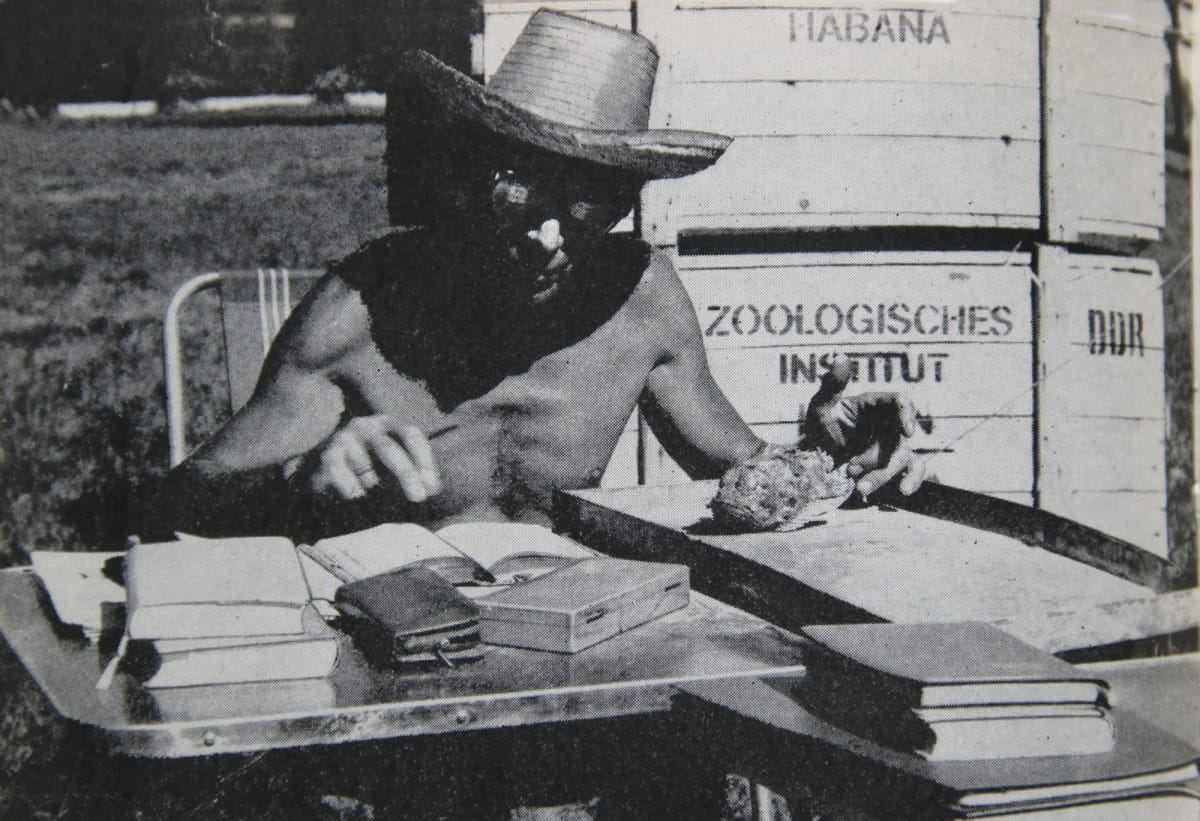
Finally, after many weeks and several dives, about 10 tons of corals were loaded and sent by ship on the long journey from Cuba back to East Berlin.
Surprisingly, they lay untouched in the depot for another 7 years, until in 1974 — on the 25th anniversary of the GDR — a very small part of the corals was unpacked and exhibited in the museum.
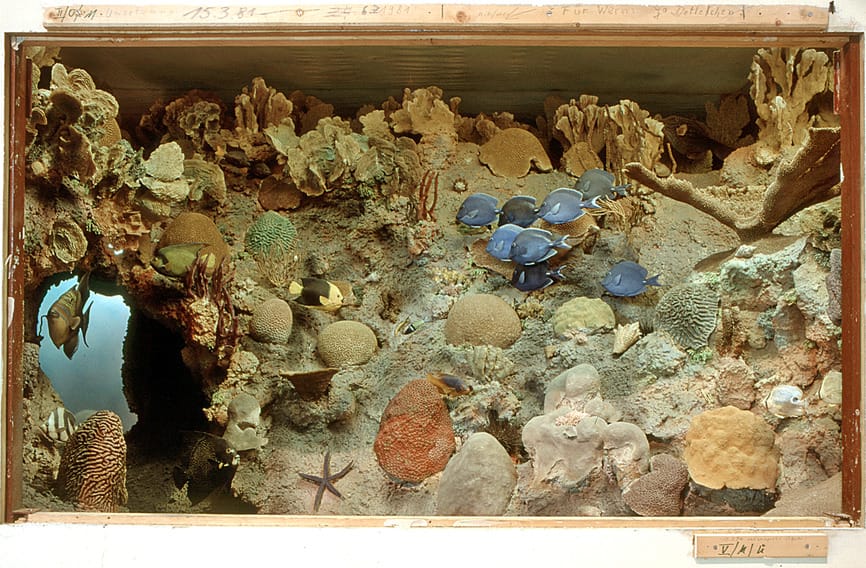
Why the entire inventory was never built up will probably remain a mystery, at least it is difficult to understand with a previous expedition of this size.
It took another almost 30 years, when the remaining boxes were unpacked and more of the Cuban corals were integrated into the exhibition. The GDR no longer existed at that time and the turn of the millennium had already passed without catastrophes.

But what does this story have to do with Glashütte or even the watch presented here?
The Connection
Since the historical model of today’s SeaQ, the Spezimatic Type RP TS 200, was set to hit the market in 1969, it made sense to test the watch in the aforementioned 1967 Cuba expedition. And so the watch from Glashütte in the Erz Mountains made the great journey to faraway Cuba and had to prove its underwater suitability and robustness, for example while handling a pneumatic chisel.
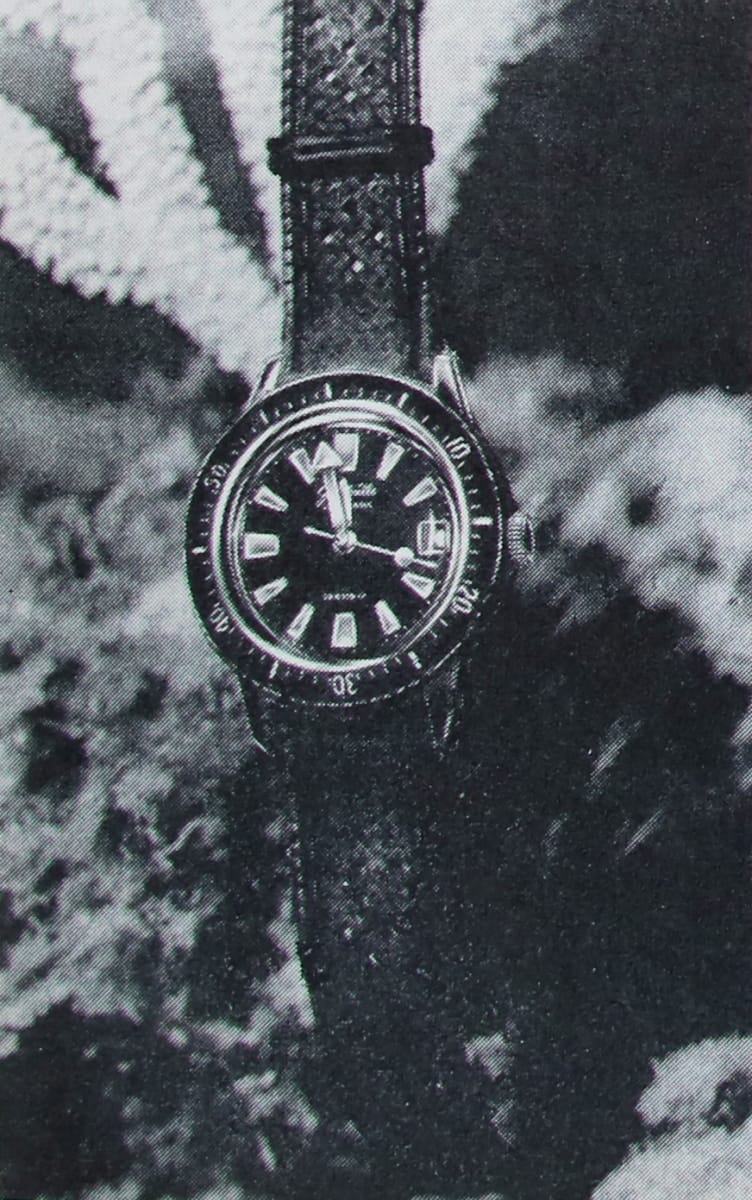
But not only the prototype of the diving watch from Glashütte was asked to the test, but also an Orlik from the then CSSR, as well as two models of the Squale Master were sent along. In short, the (first?) diving watch test of the GDR.
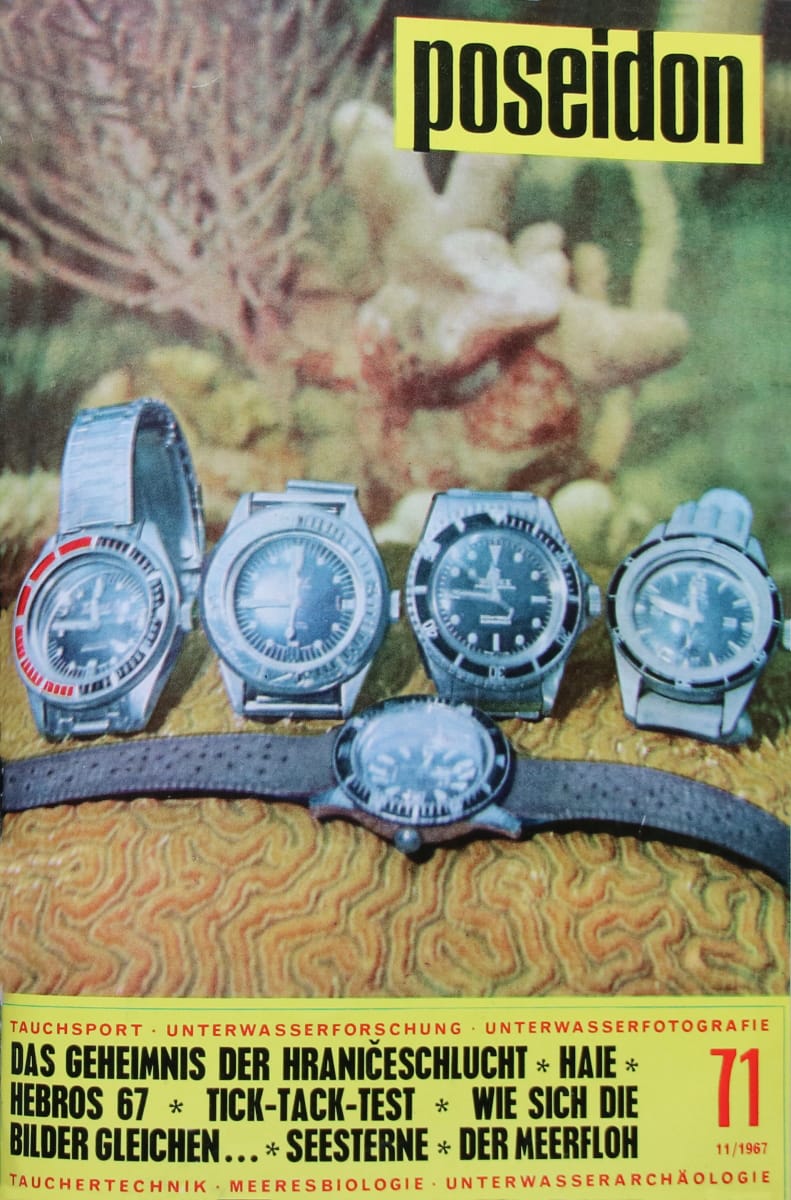
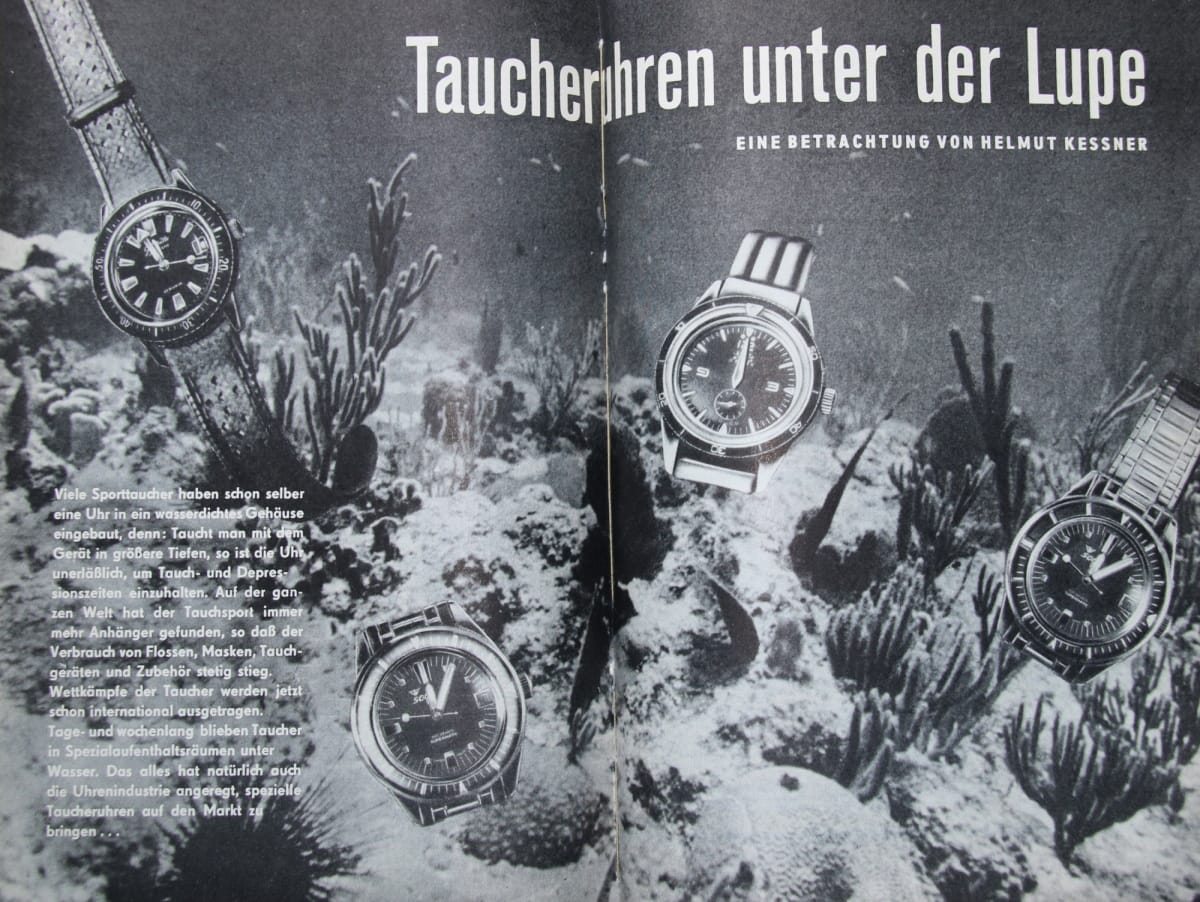
After countless dives and operations with hammer and chisel and many hours under water as well as in the hot and humid air on land, all watches had passed the endurance test without failure.
The official test result
“For the diving enthusiast, in our experience, both the Orlik and Glashütte models meet all the requirements (if one disregards minor construction flaws on the bracelet, setting ring and crown, which are easily remedied), but for the autonomous professional diver, the Squale construction should offer greater security.”
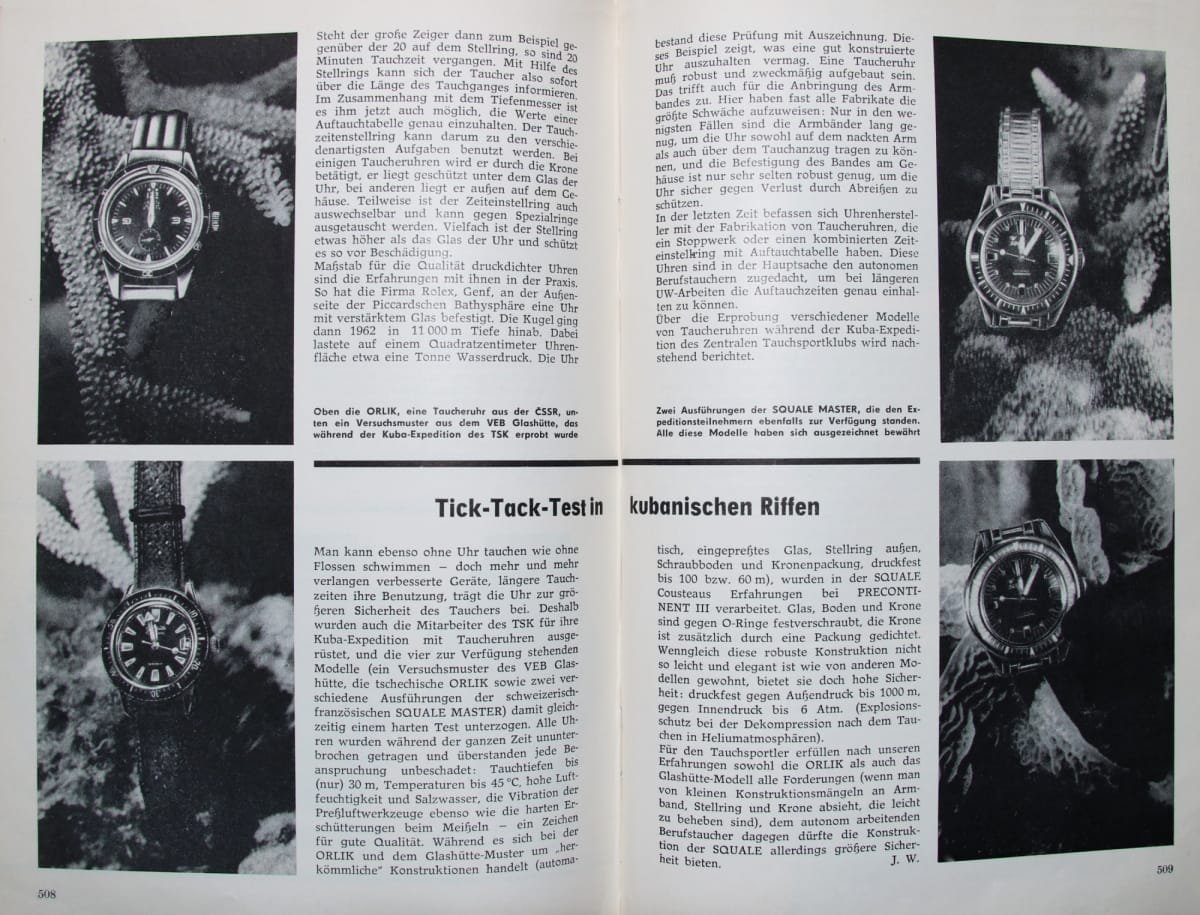
After a few minor changes based on feedback from divers, the watch from Glashütte was ready for launch.
The Spezimatic Typ RP TS 200
The Spezimatic Typ RP TS 200 with its Caliber 75 was developed for sport divers and was the first industrially manufactured diving watch of the GDR. It was brought to market by the VEB Glashütter Uhrenbetriebe in 1969.

This diver’s watch even has an early East-West connection, because the cases of the watch were made in Pforzheim/Baden Württemberg and then delivered to Saxony. The movement Caliber 75 on the other hand came from Glashütte.
Since it was nothing unusual at the time for case and dial manufacturers to sell their designs to different brands, you can find visually similar looking models from other manufacturers from this time period.
We now leave the 60s and jump back to the present.
The SeaQ
Exactly 50 years later, in 2019, when VEB Glashütter Uhrenbetriebe had become Glashütter Uhrenbetrieb GmbH, Glashütte Original launched a new collection. The Spezialist series. With this series, various historical models of watches were presented, now called SeaQ. Pronounced in German “SeaQ” sounds similar to “Seekuh” which is the German word for manatee, hence the title for this article.
A first model of this was the SeaQ 1969, which was available as a limited version with 69 pieces and was visually closest to the original. As “big sisters” there were other variants with larger diameter, panoramic date, glass cases and more modern movements. Later, other versions in different sizes and materials joined them.

I honestly had a few small doubts about the blue of the watch. On the pictures on the internet you could already see that depending on the light, quite a few shades of blue were possible. On the one hand, I really wanted a splash of color in the watch box, but on the other hand, it should not “glow” too much in everyday life.

Now I can say, everything in the blue. So far, there has not been a lighting situation in which the watch would have been “too blue” for me, the color is usually wonderfully restrained, from dark blue to a strong cornflower blue, the dial can represent everything in different facets. In many cases, the bezel even appears anthracite and thus also very discreet. That’s how I had imagined it.
As expected, there is nothing to complain about the quality of the watch. The watch has a very high-quality feel and look. The case and the flanks are polished in different directions and the outer edges are partially polished. On the screw-down crown, you can see Glashütte Original’s mirrored double-G logo. The back shows the trident of Poseidon in the midst of waves, as well as the Glashütte Original lettering, the number of the watch and other writings.
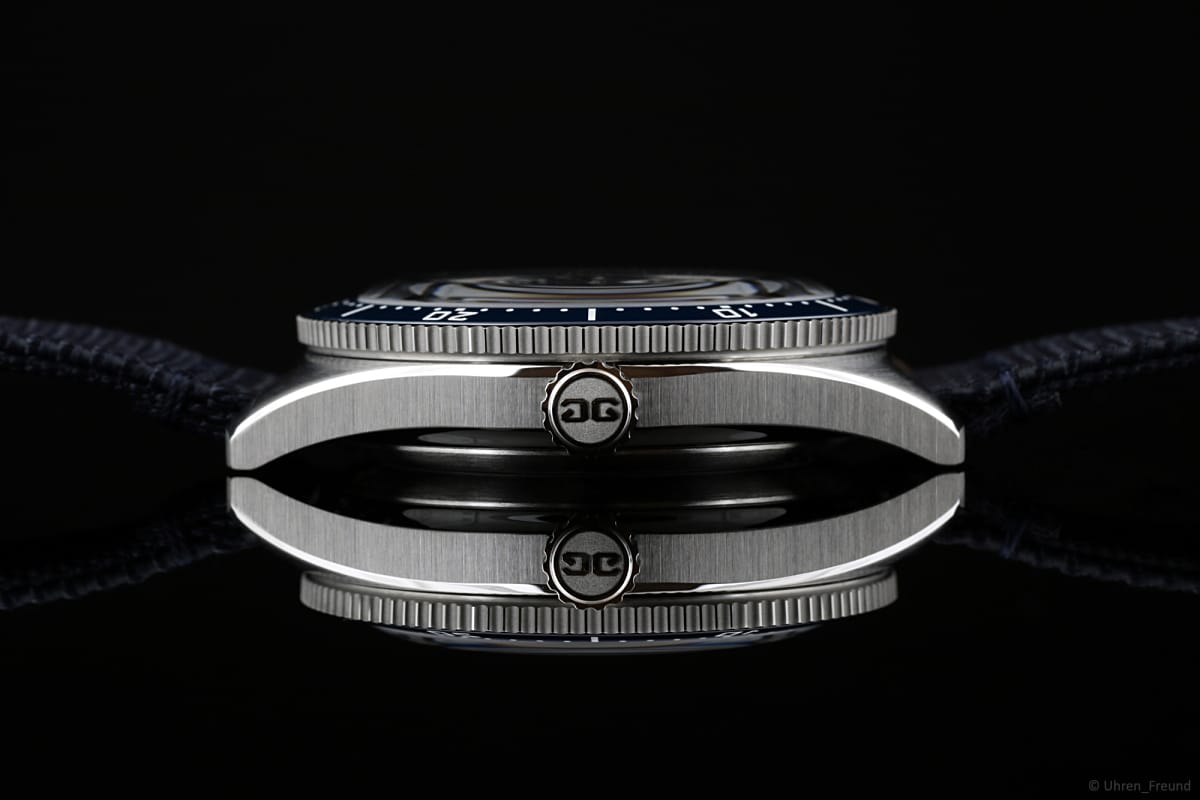
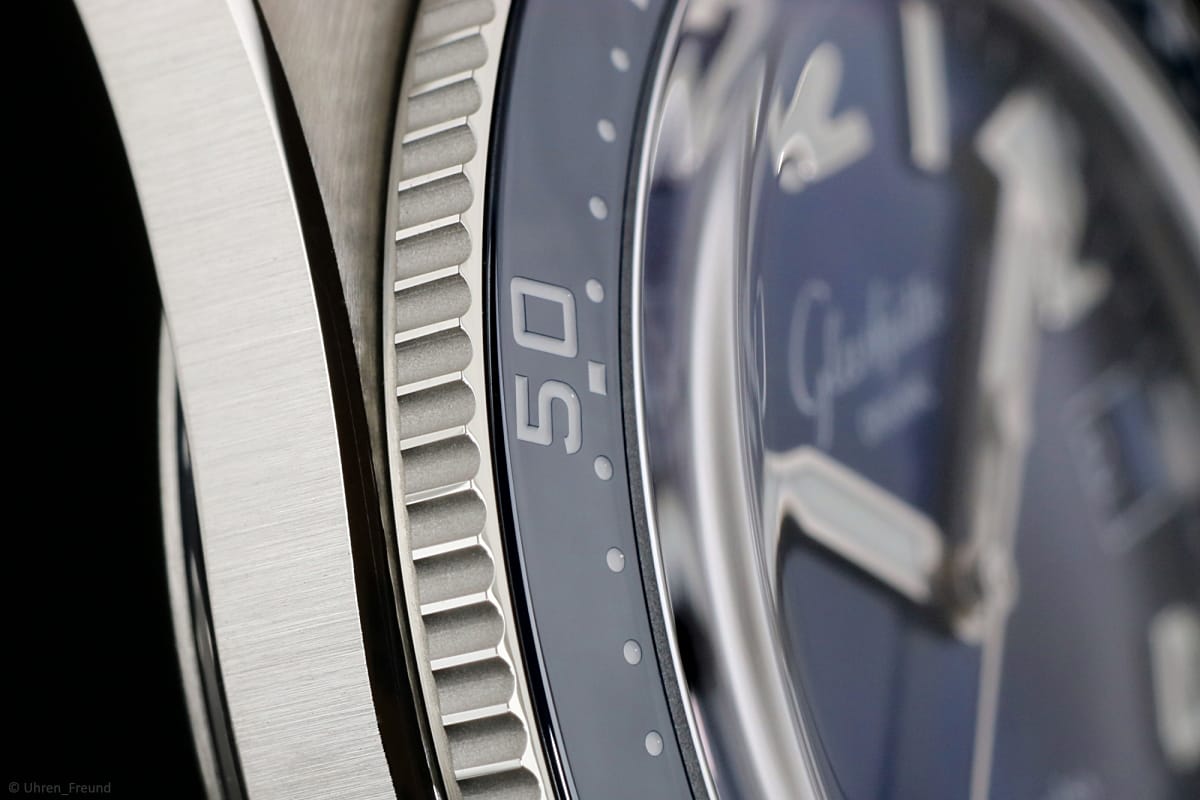

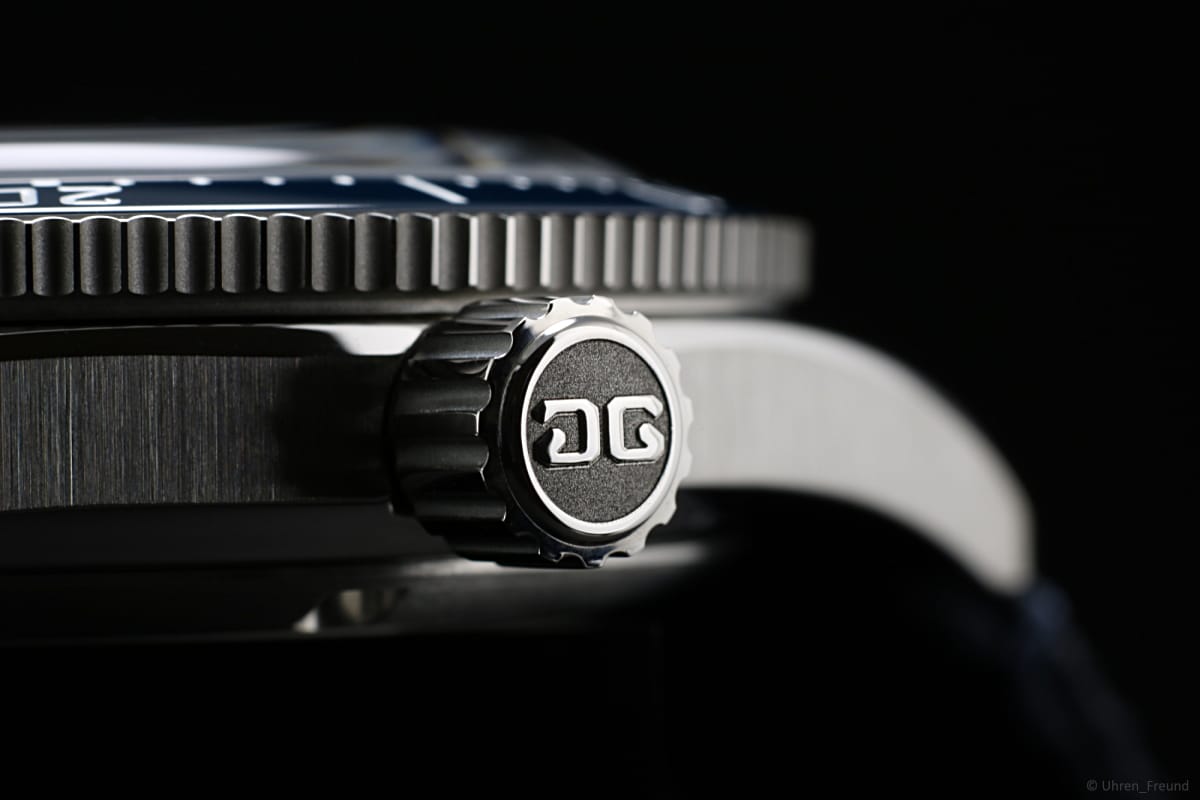

The blue dial has a sunburst finish, creating beautiful blue tones that never become obtrusive. Even the slanted surfaces of the date window have this cut. The date disc is in the same shade of blue as the dial, which is not always the case.

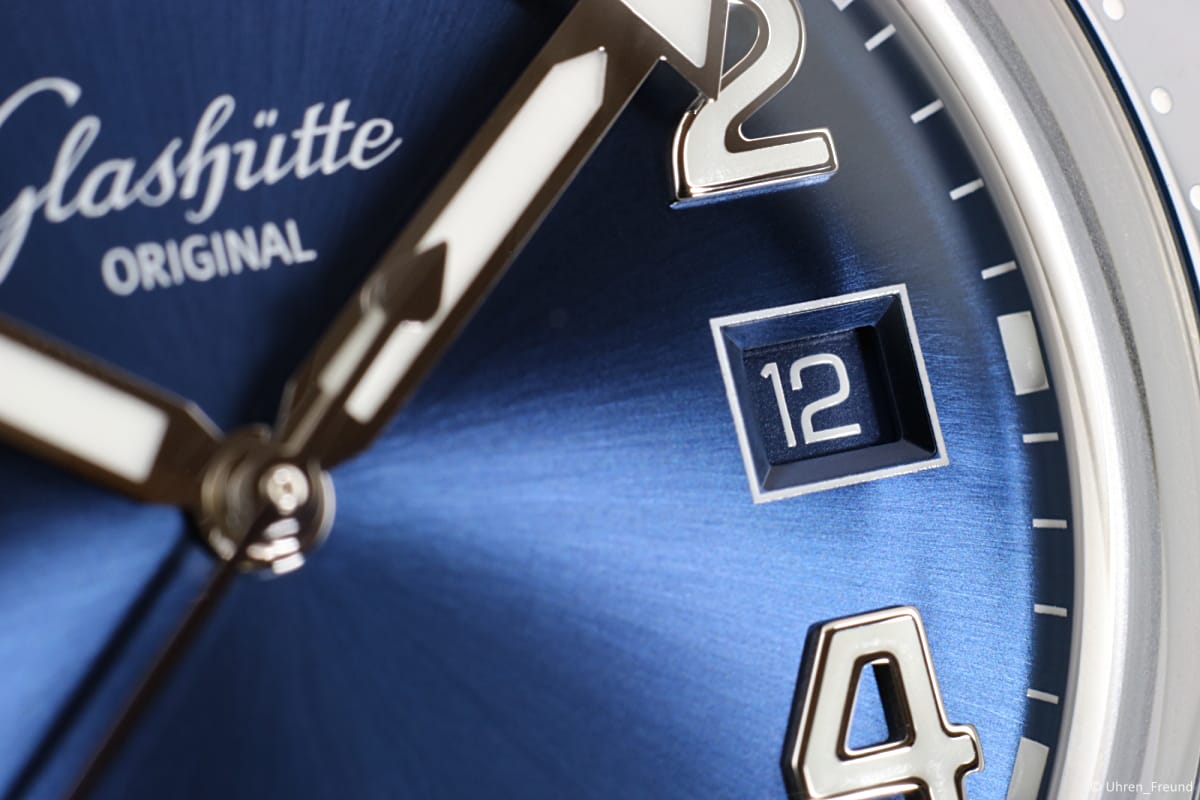
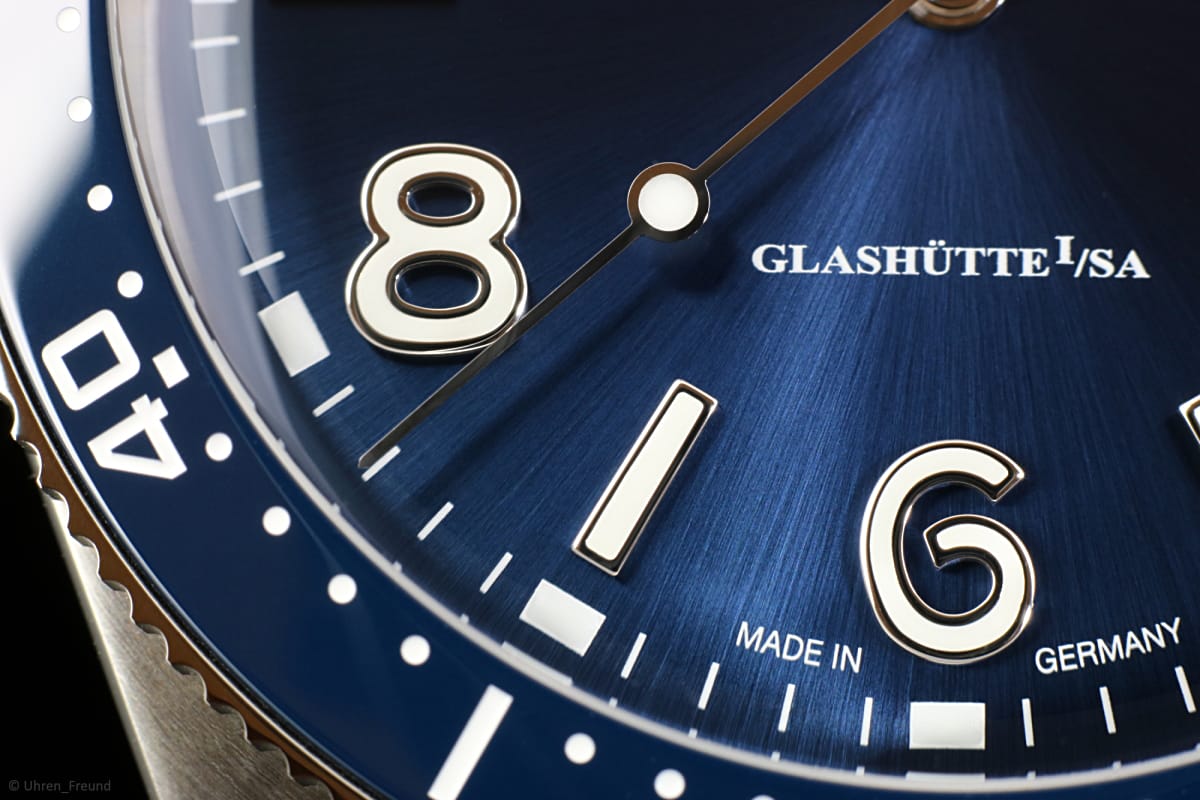
The applied indices, as well as the hands and the marking triangle on the bezel, are filled with white Super-Luminova, which glows in a brilliant shade of blue. The readability in the dark is excellent.
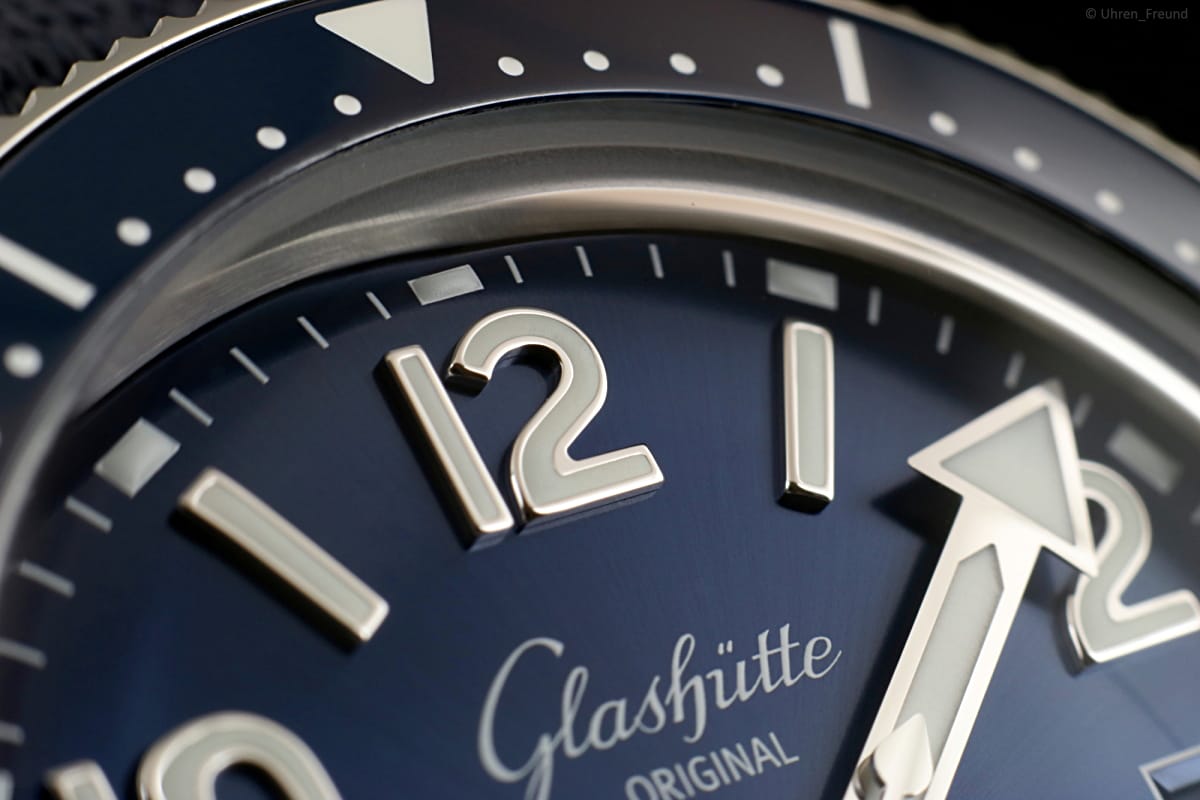



When choosing the strap, it was clear to me from the beginning that it will be the blue-black textile strap. I think it fits the watch best. I personally do not like metal bands. I have a preference for textile and leather straps. So as so often, a classic question of personal taste.
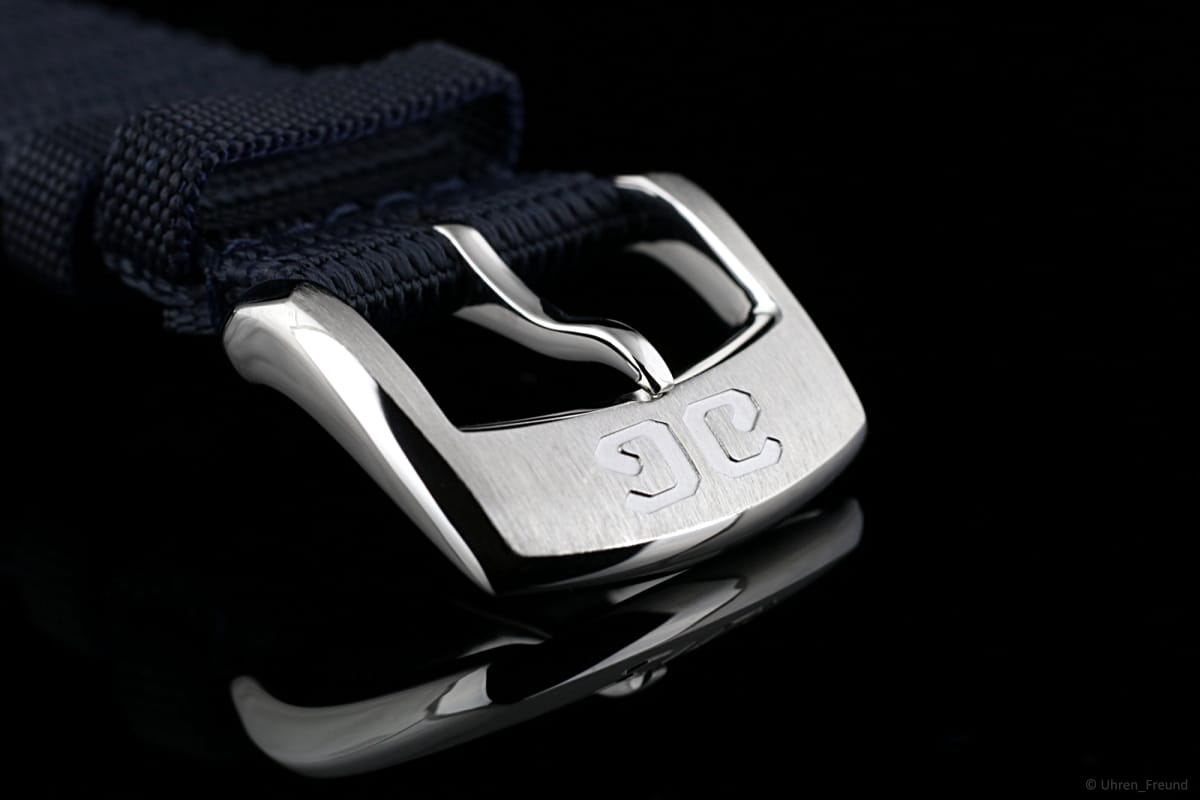
The Mechanics
Hidden inside ticks the proven automatic movement GO 39-11. The movement has a power reserve of approximately 40 hours and operates at 4 Hz (28,800 A/h). Other typical Glashütte features are a swan-neck fine adjustment, the three-quarter plate with striped finish, and the double sunburst finish on the winding wheels.
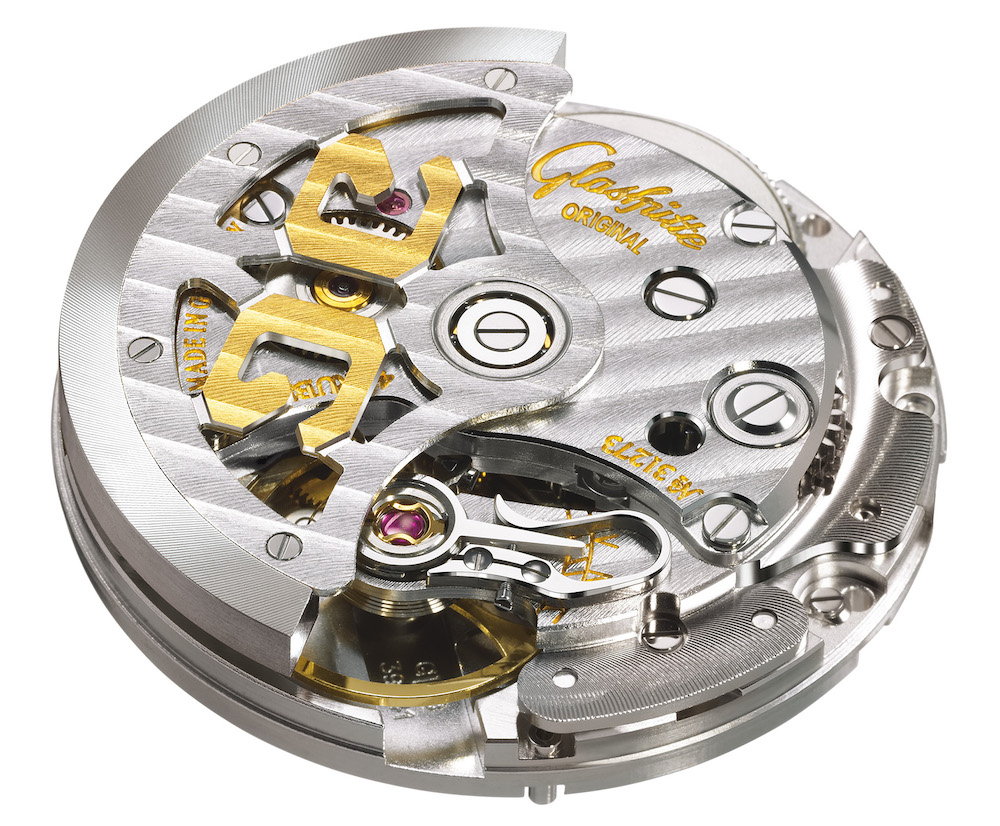
The skeletonized rotor has a heavy metal oscillating weight and features Glashütte Original’s iconic mirrored “double G”.
The diving watch standards
The watches of the SeaQ series are certified according to the diving watch standards DIN 8306 and ISO 6425, i.e. special features like defined readability in darkness / time span selection / minute markers / running ability of the movement (luminous second hand) have to be present and a whole series of different tests have to be passed to get this certification.
Those would be
- Pressure load with 20 bar over a defined period of time
- Temperature change tests (condensation water)
- Shock tests may lead to a max. rate deviation of ±60s in 24h
- defined deviations for magnetism
- Salt water resistance
- Bracelet strength
- the average accuracy may be max. -4 to +6s (DIN 8306 only)
…and a few more.

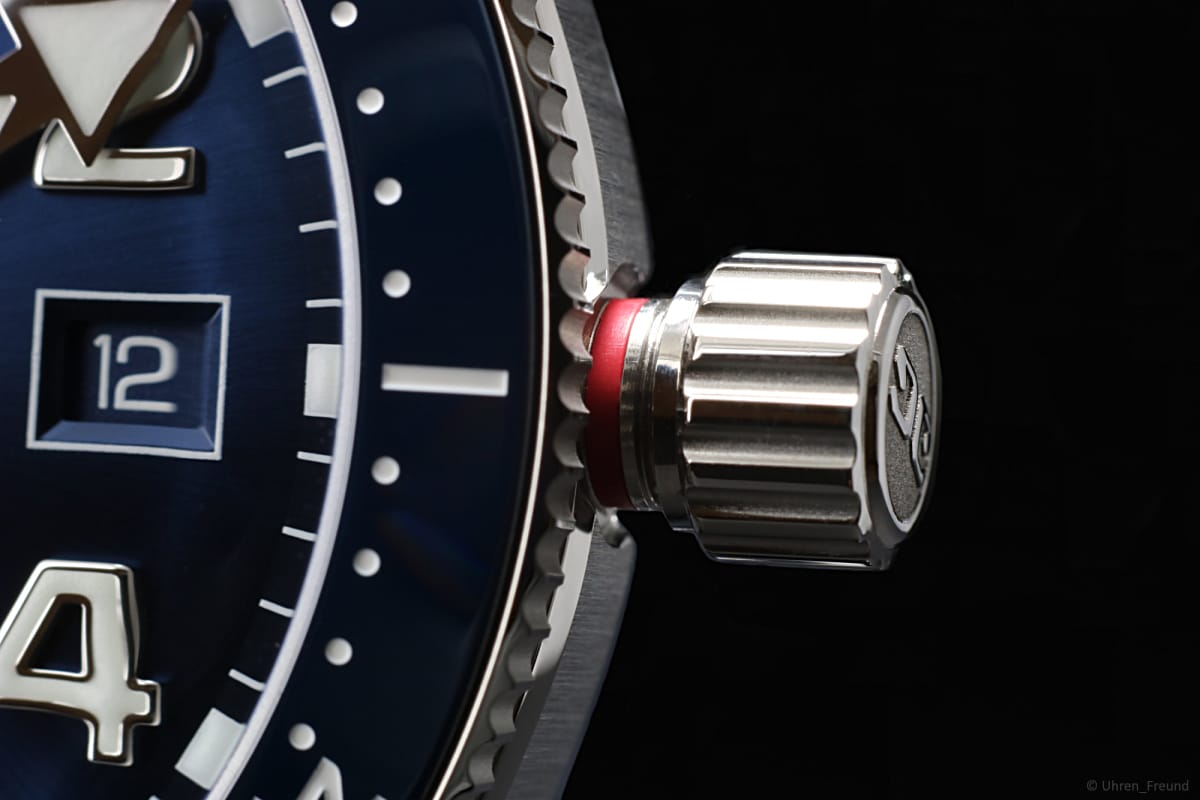
The criticism
The SeaQ in the small version also has to put up with a bit of criticism, although this is complaining on a high level. The Caliber 39 used here runs great, it is very precisely regulated, as already in my other watches. However, since it has been on the market for many years, I would have liked to see an update here and a new more modern movement find its way into this great watch.
Many would also have liked to see a glass back, which would have shown the movement. Understandable, but it does not bother me personally in this case, as I am lucky enough to be able to observe the Caliber 39 in my other watches. I even find the engraved back with the trident very nice and valuable to look at. With all the glass backs in my watch box, this is a refreshing change.
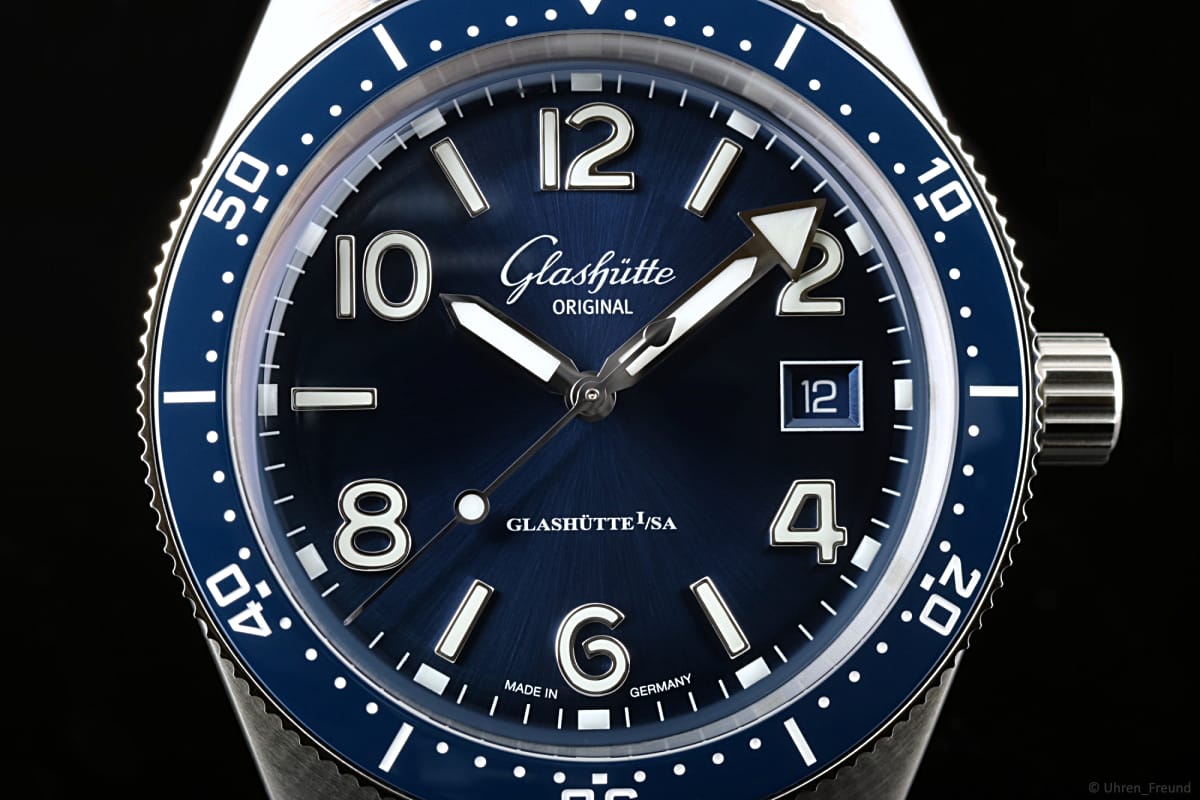
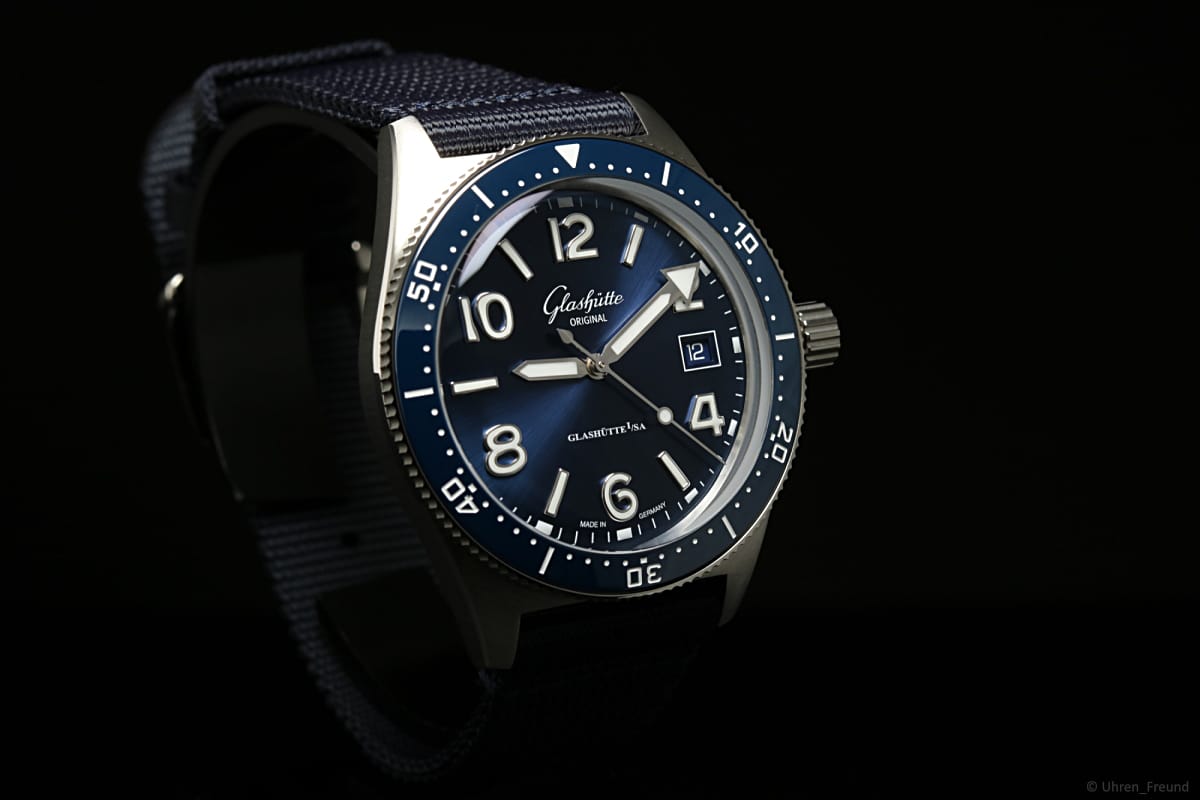
The Conclusion
…can be held short, since I’m fully satisfied. As mentioned above, a new movement would have been the icing on the cake, but that can still come in later iterations.
For me personally, the SeaQ series is really successful and I’m glad that Glashütte Original also thinks of customers with narrow wrists and does not leave them out in the cold. Please keep it up.
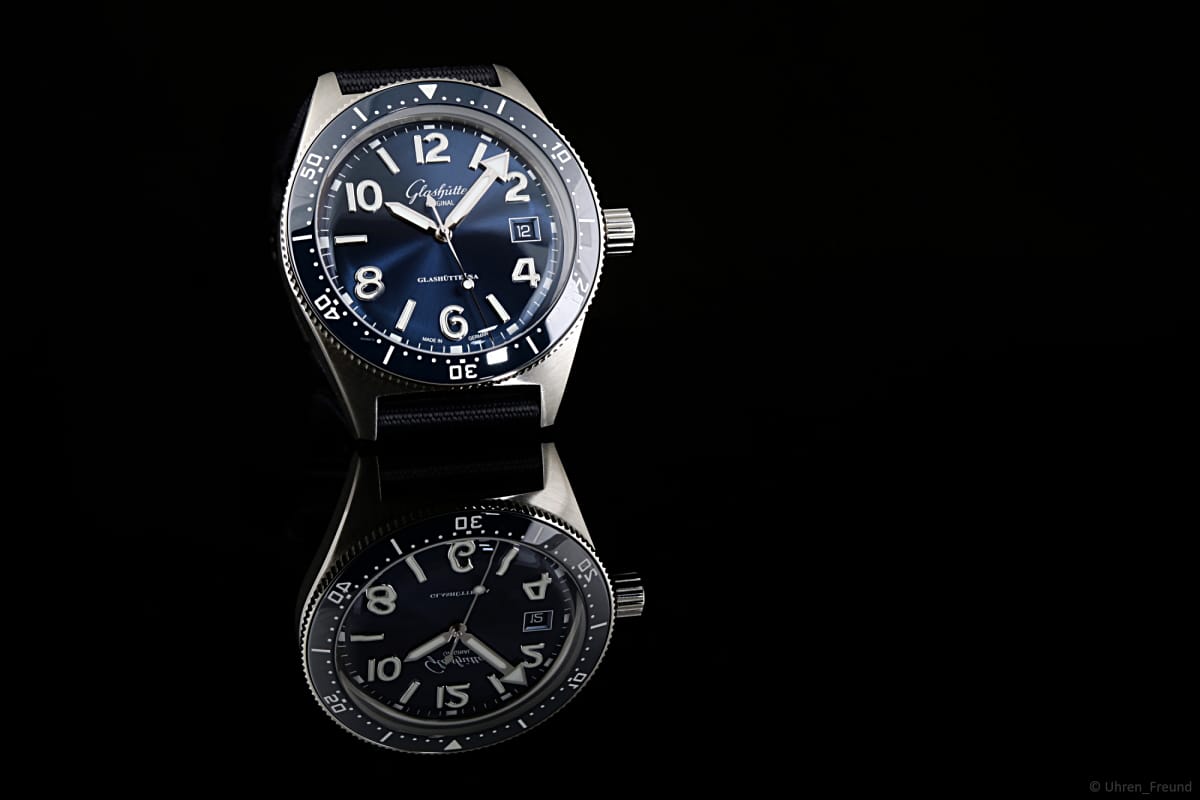
The Manatee (German “Seekuh” or SeaQ)
Now I just noticed that I still have to accommodate the manatee from the Erz Mountains somehow.
But since I don’t want to burden anyone else with an article on manatees, I’ll just mention that the SeaQ’s nickname in “experct circles” is simply Seekuh, pronounced in German this sounds like SeaQ. And this watch comes from the town Glashütte in the Erz Mountains. Sounds strange, but that’s how it is.
Ok, maybe one more thing about manatees after all. A little something about their habitat:
“Unlike whales, manatees always stay close to shore or even in freshwater and often in very shallow water.”
That’s probably where my little manatee watch SeaQ will end up too.
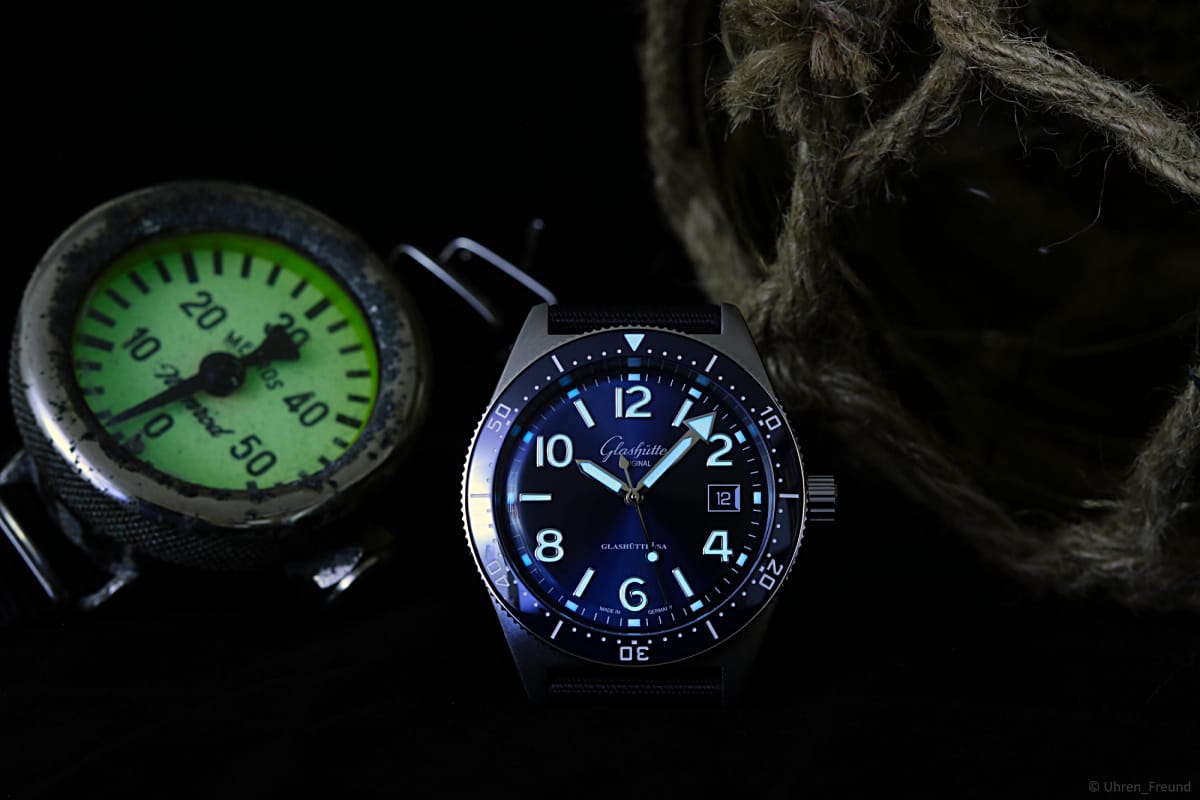


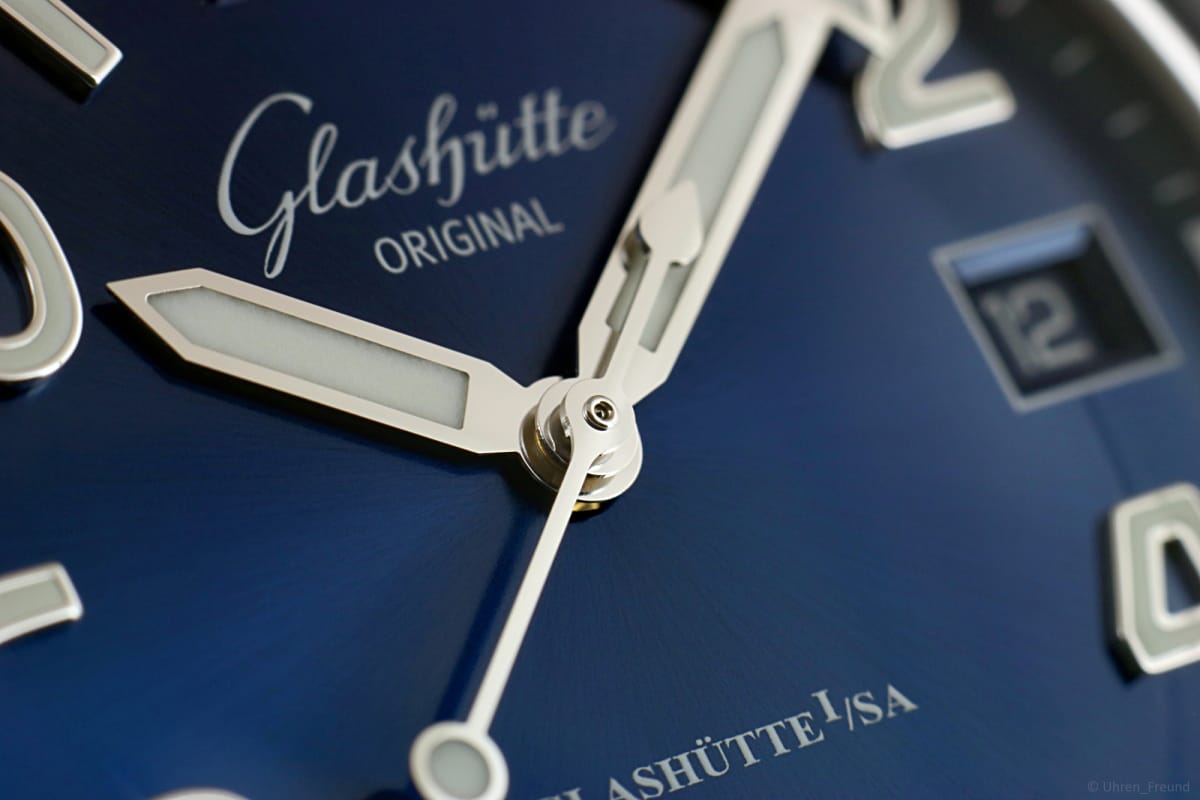


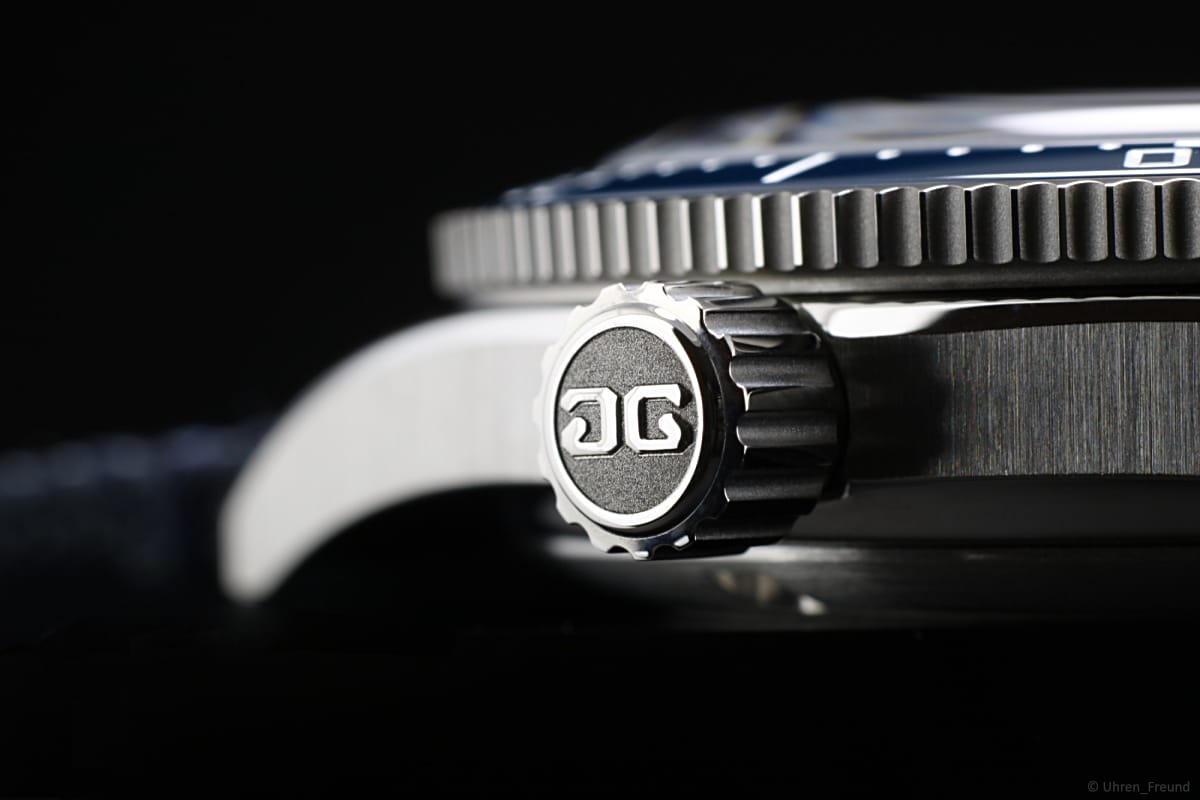
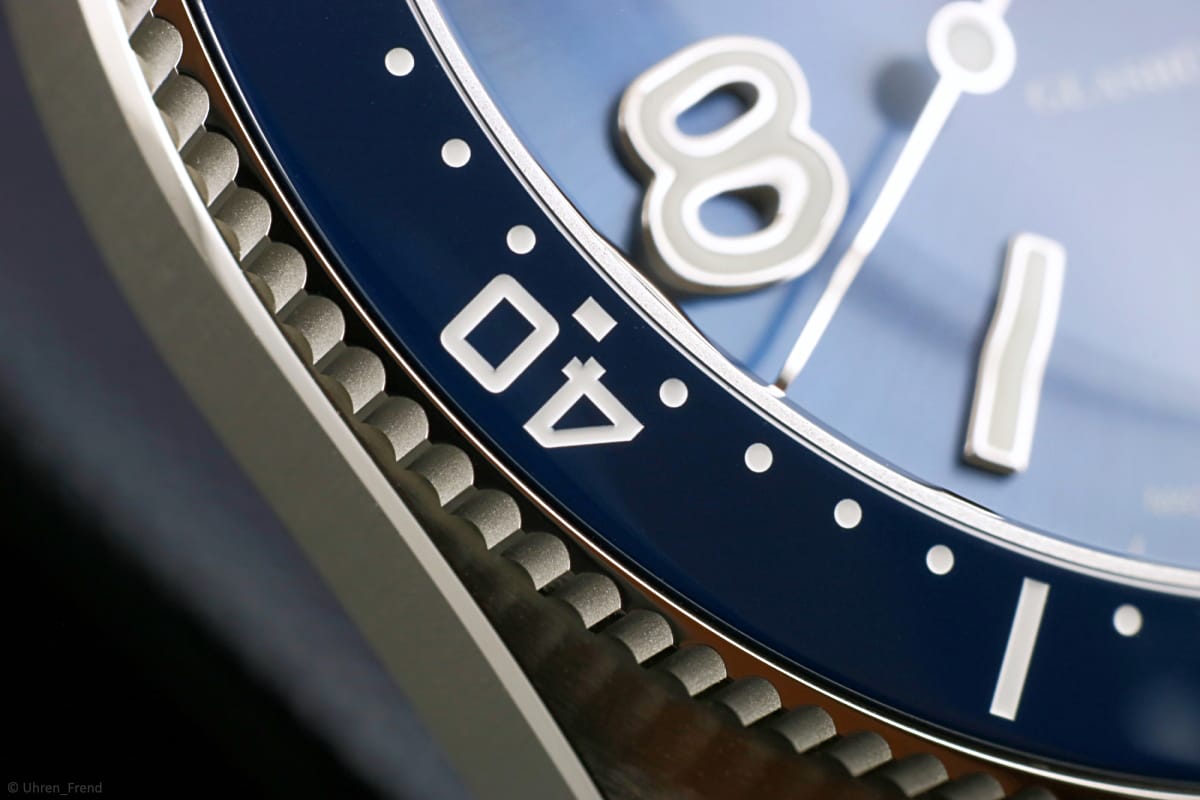
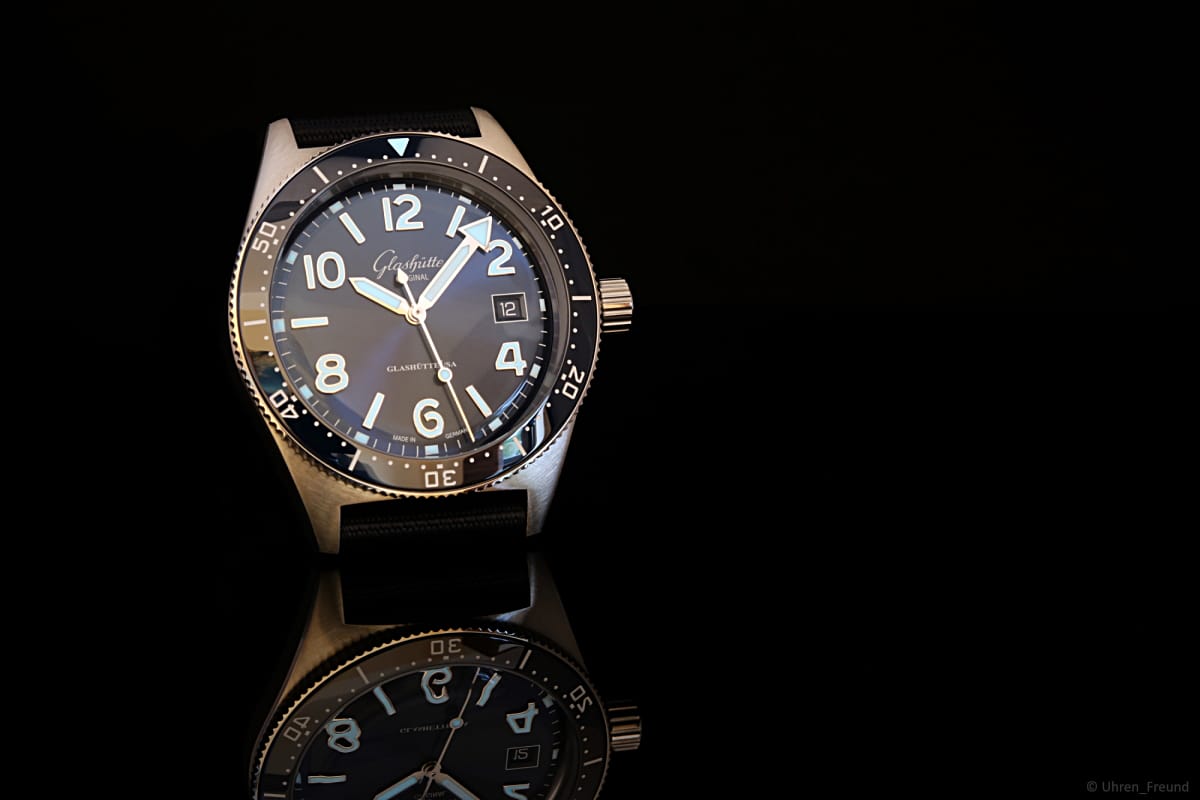

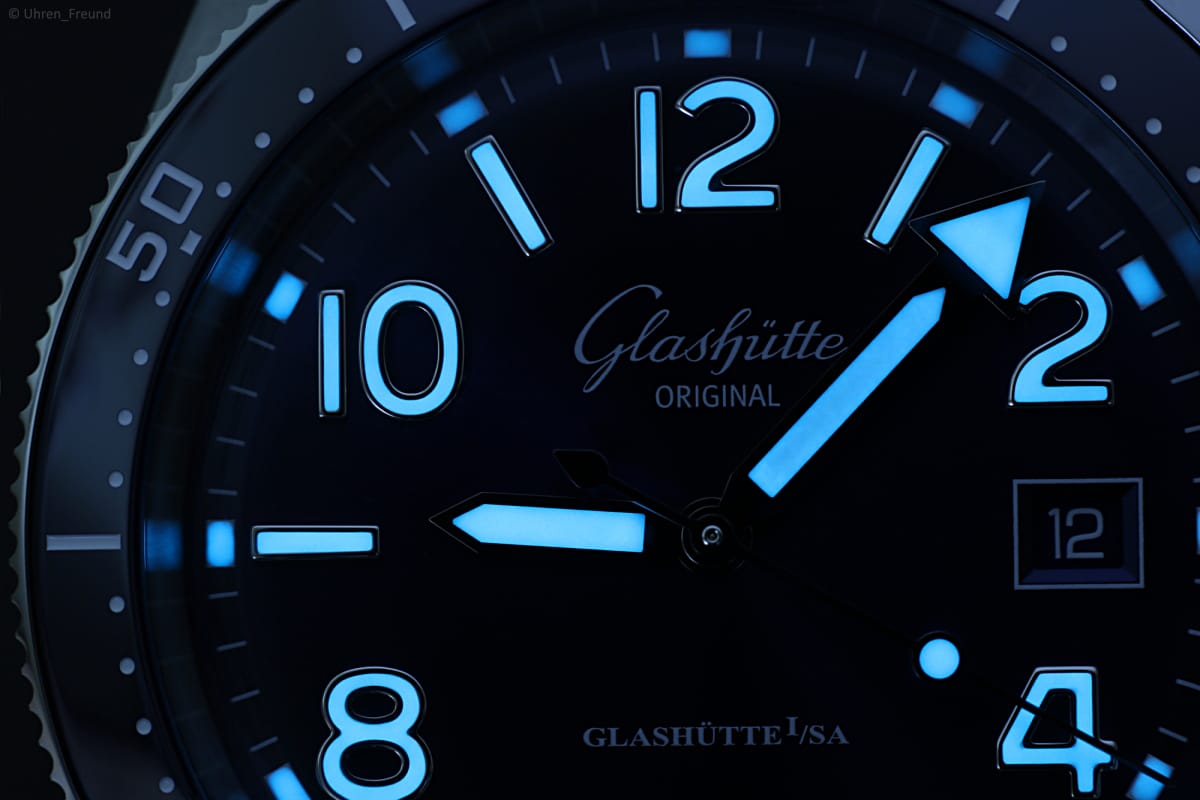
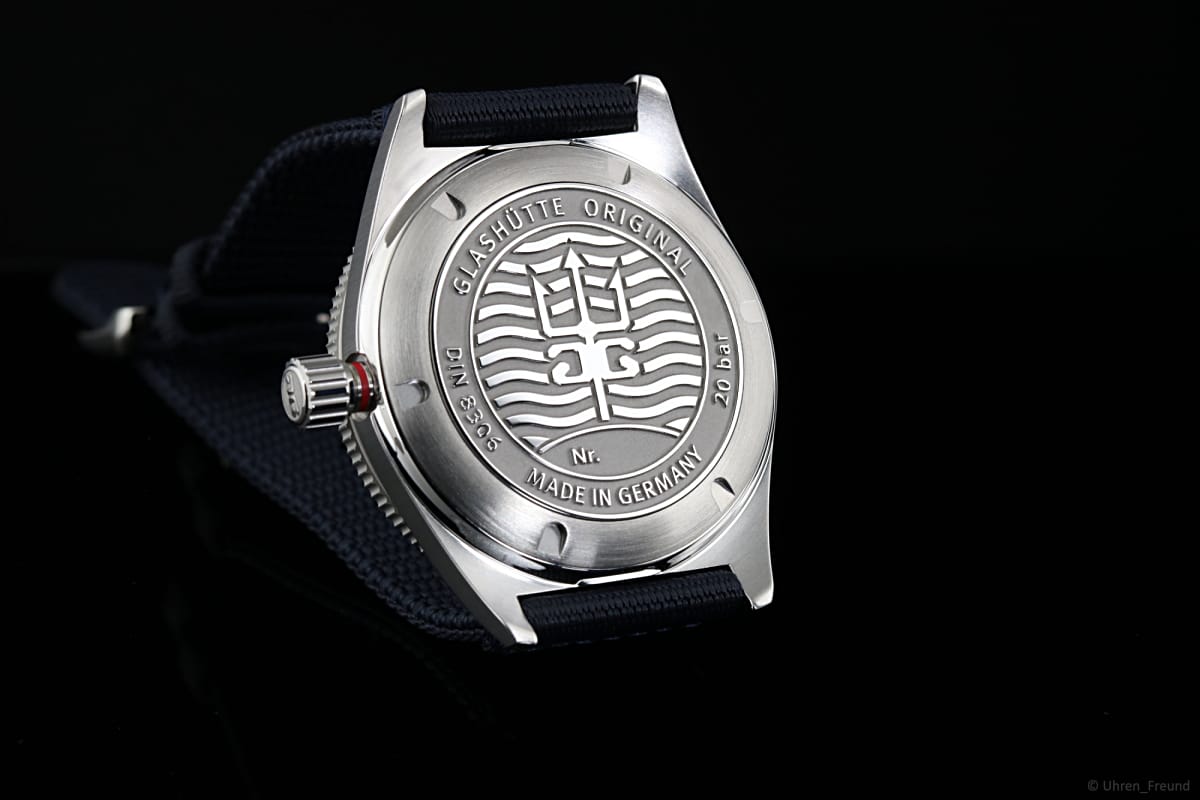
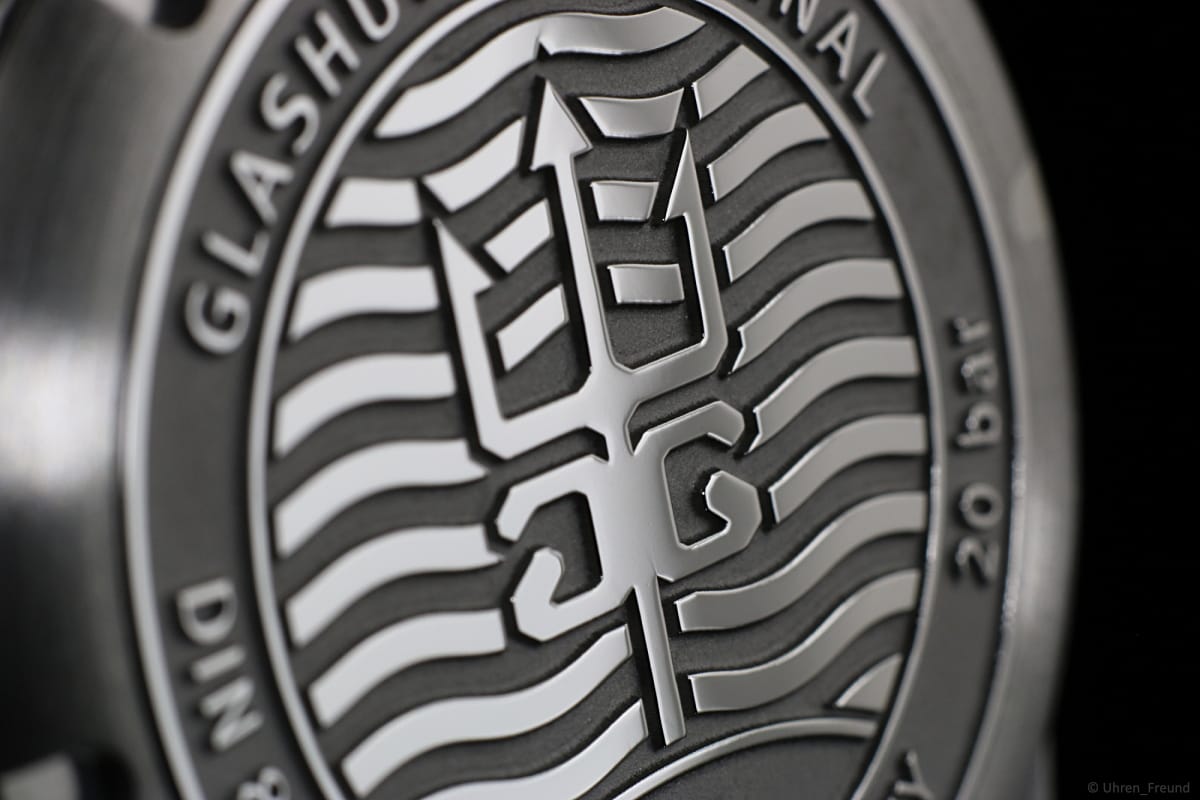
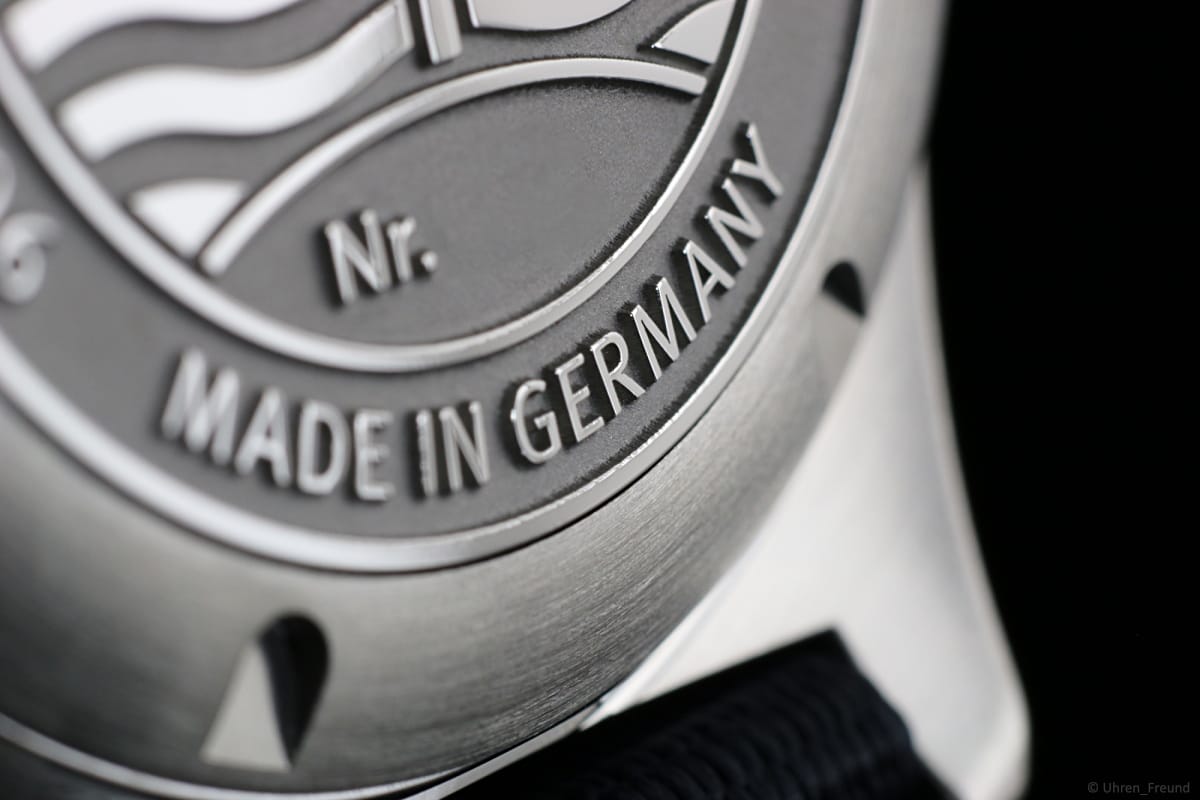
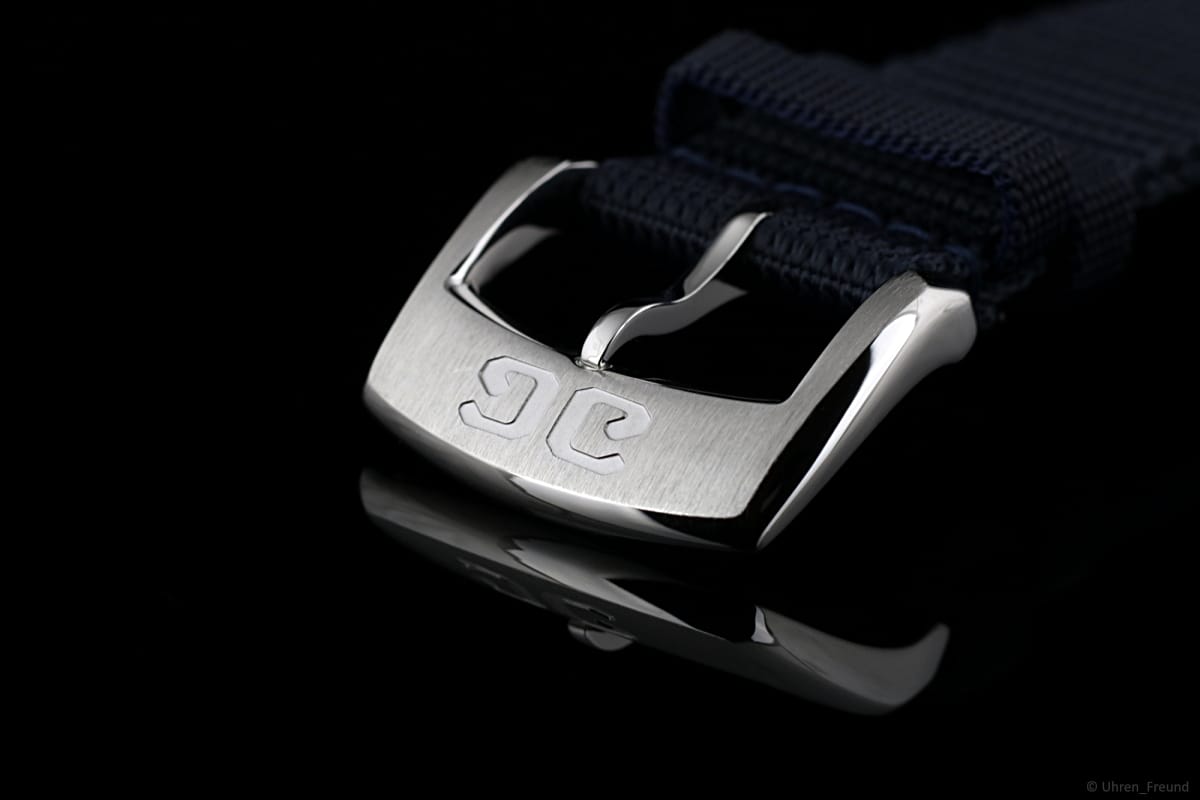
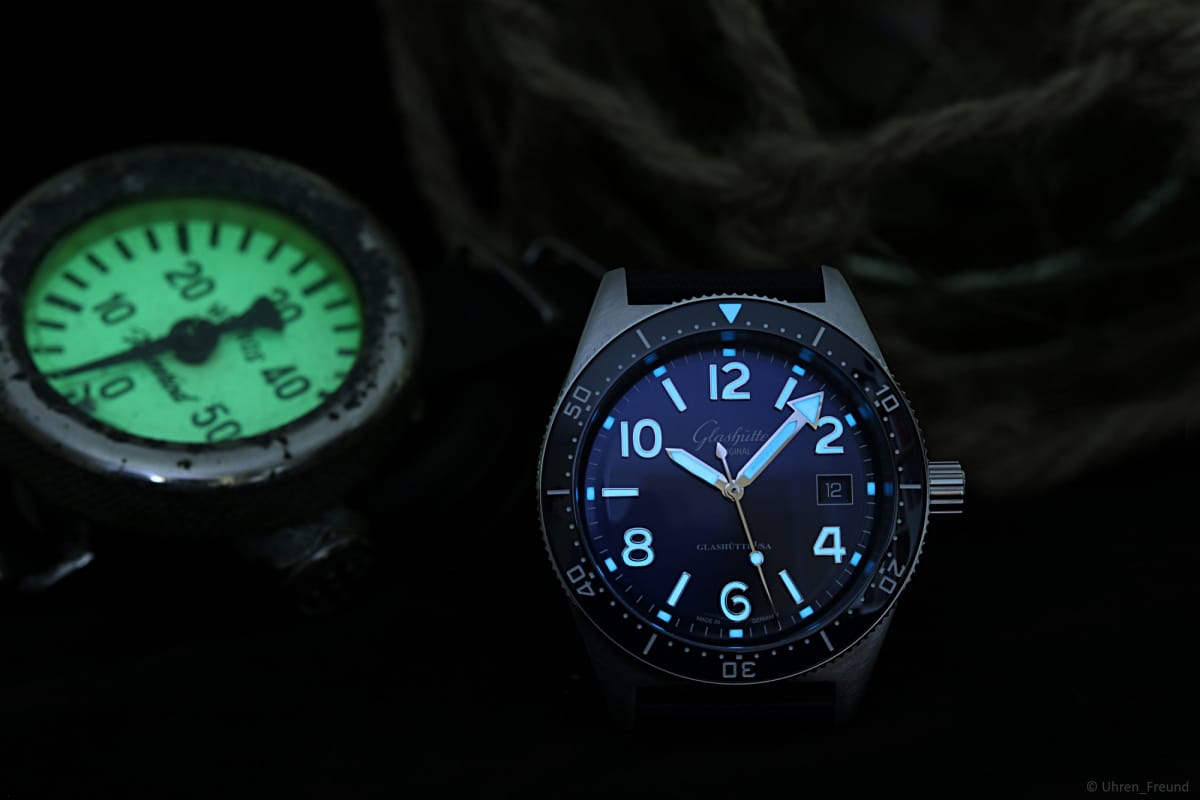
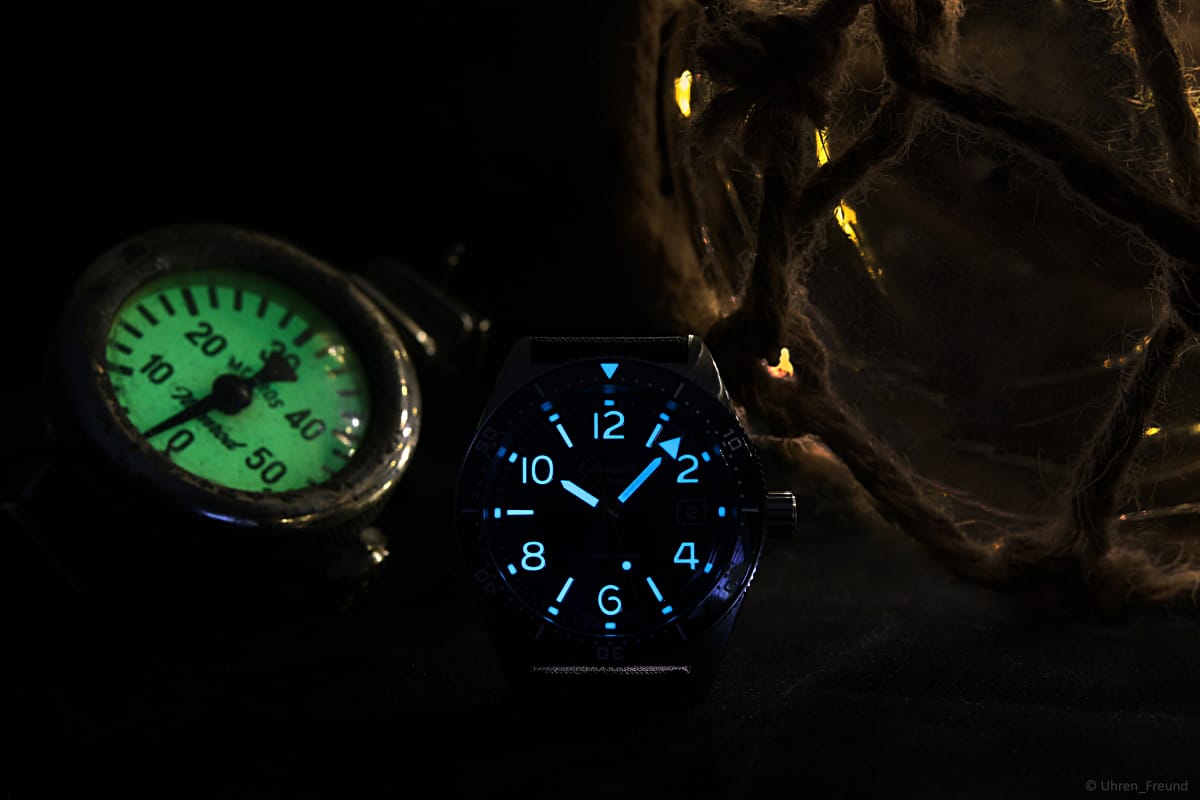
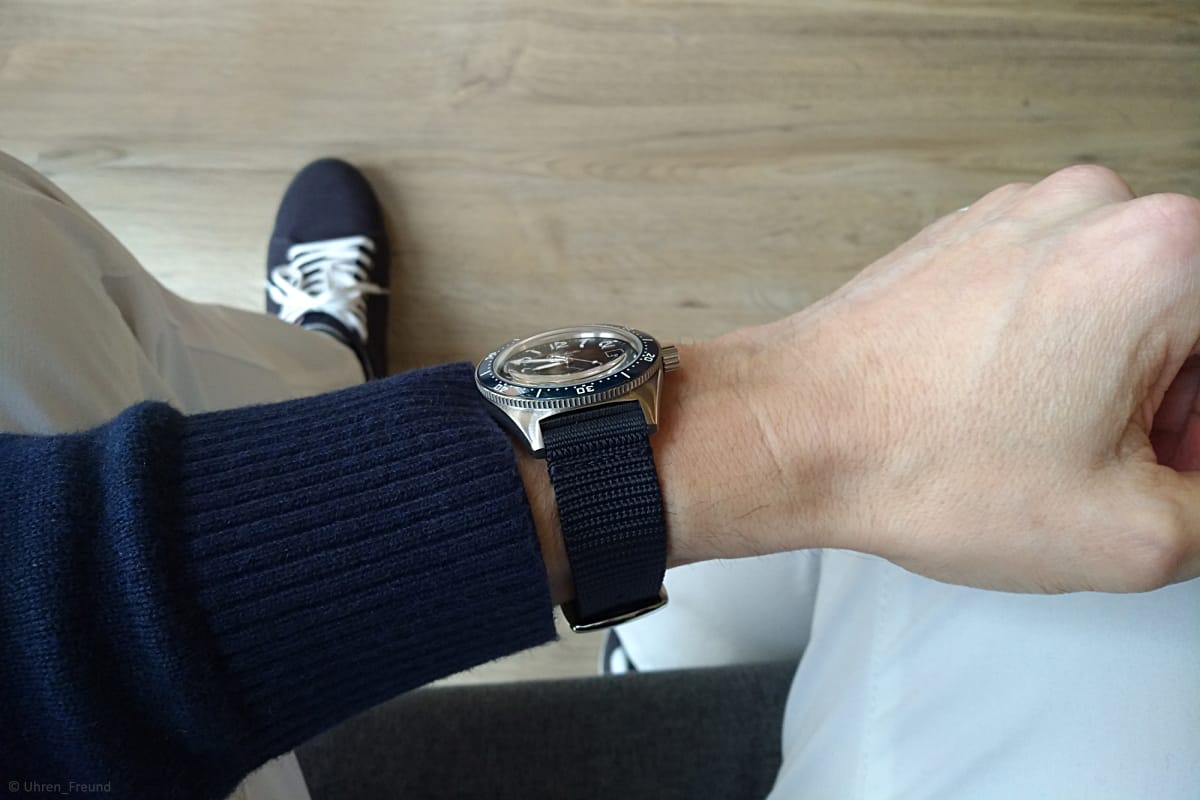

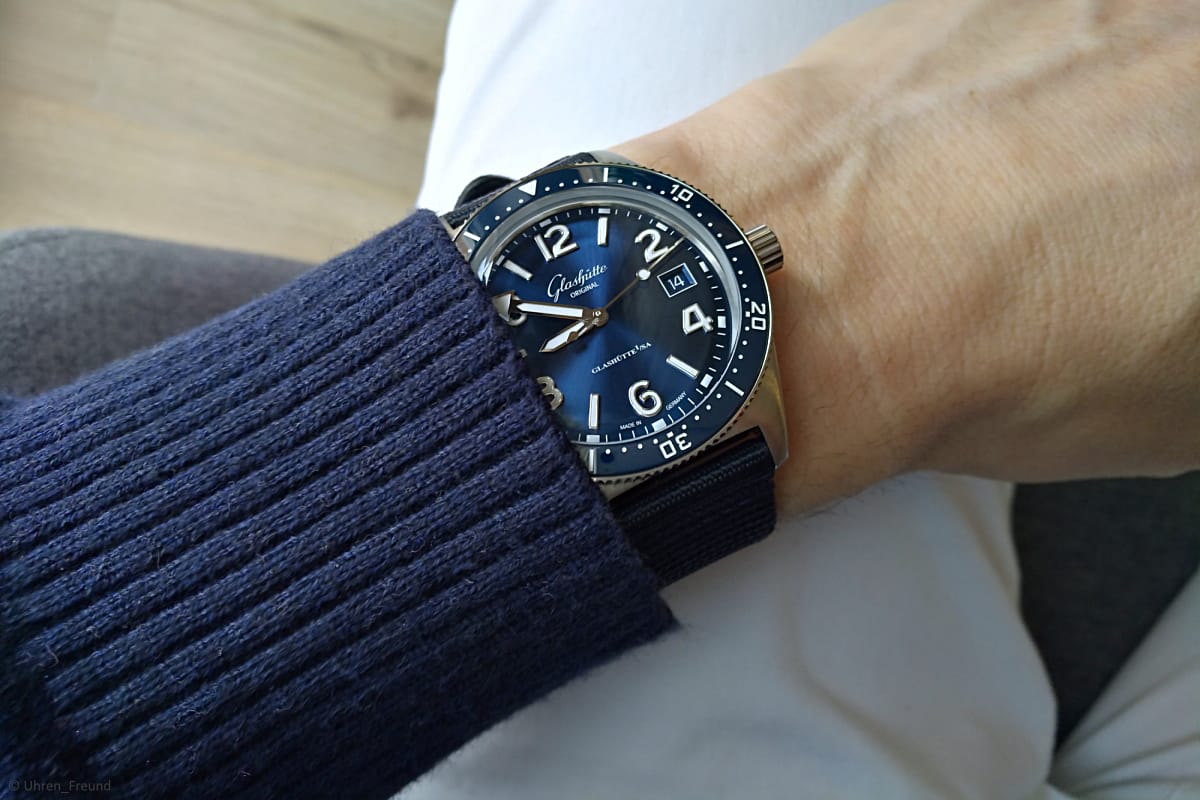



Write a comment